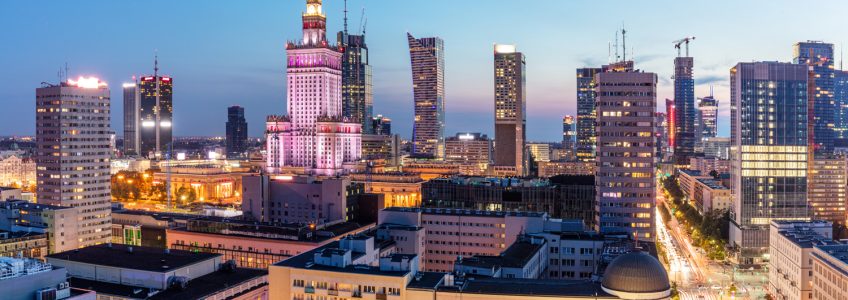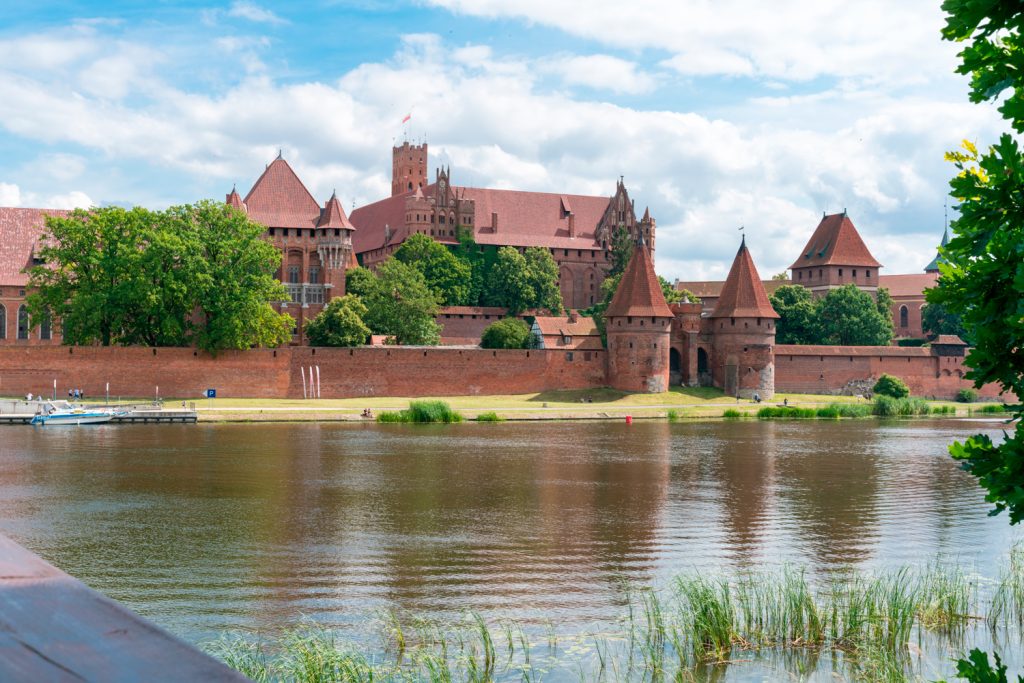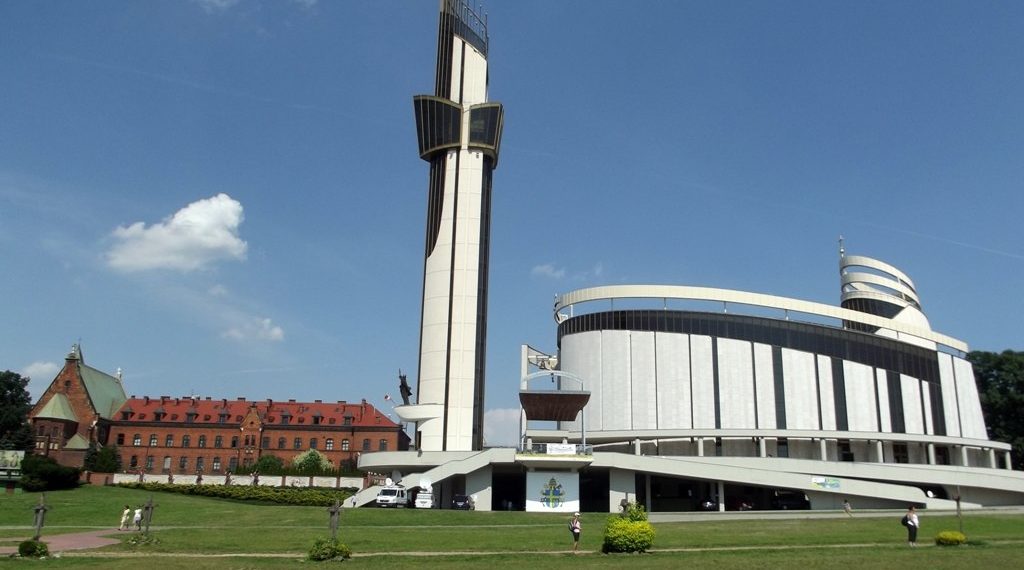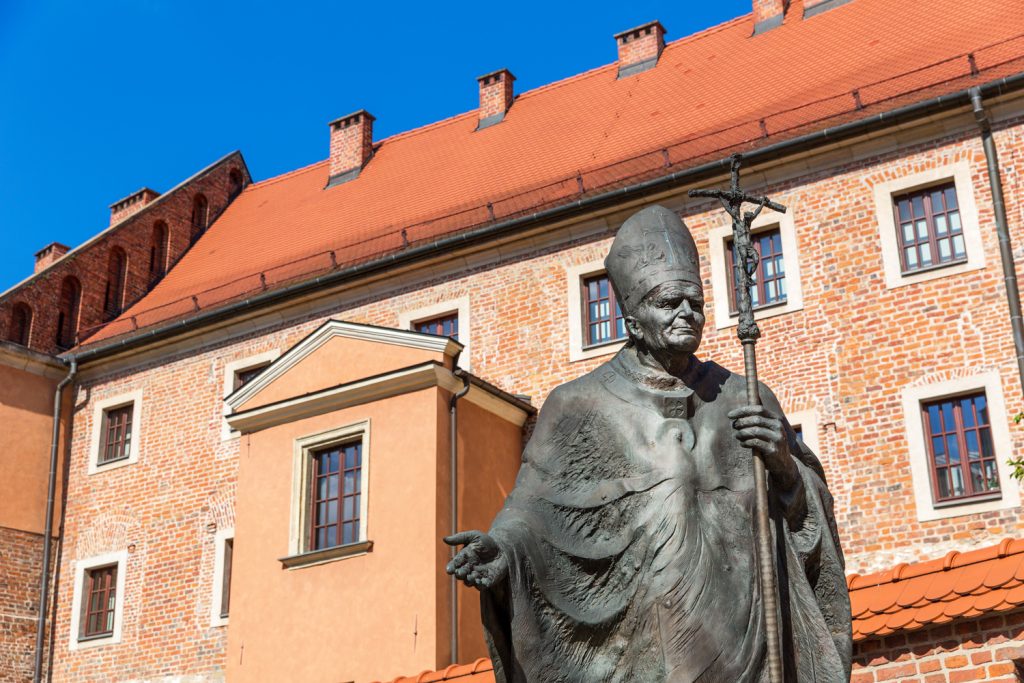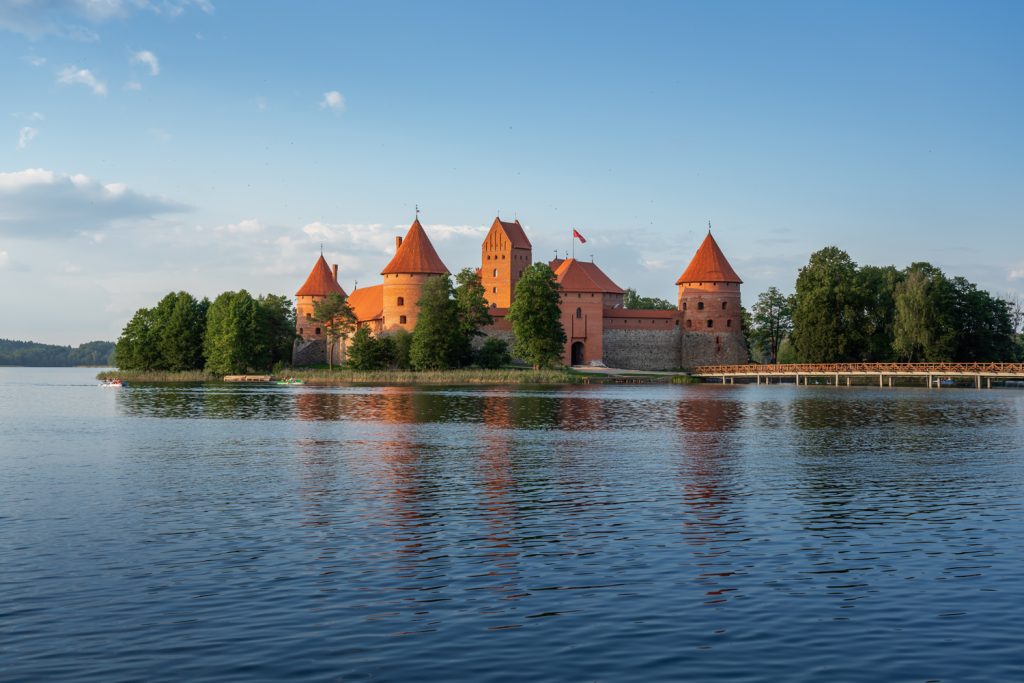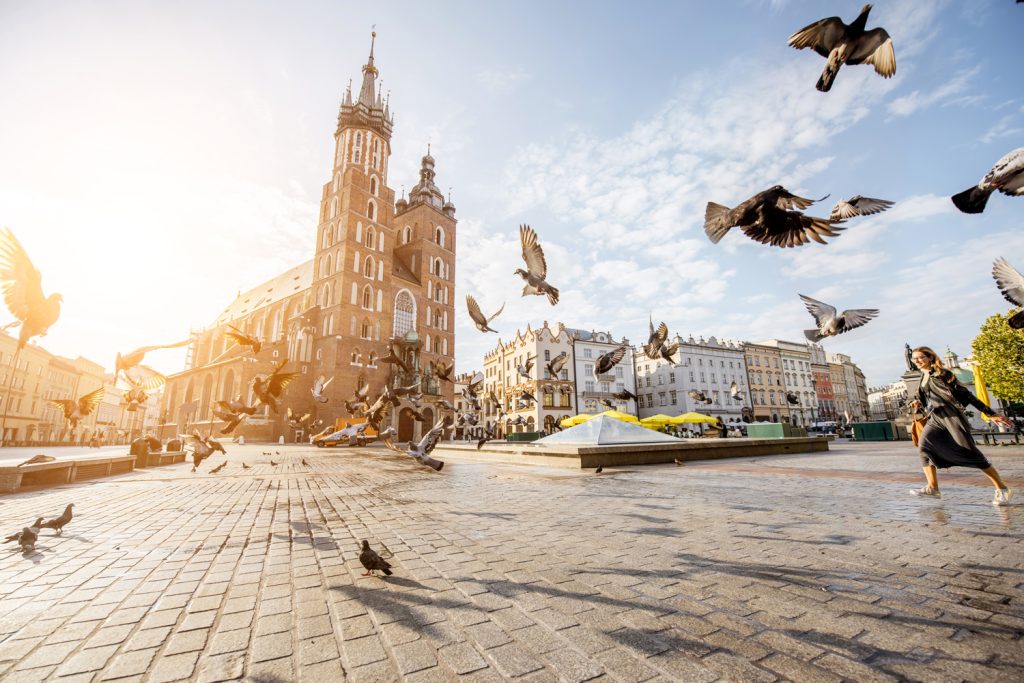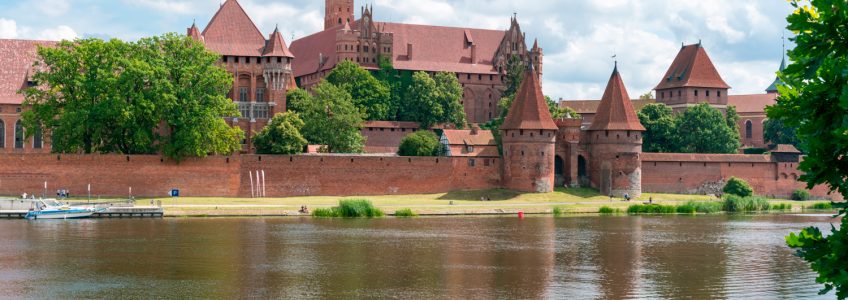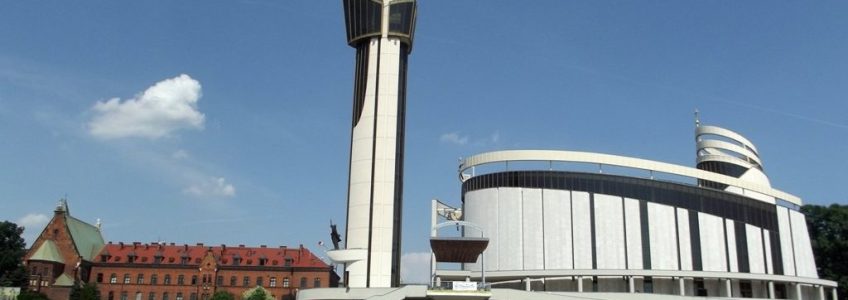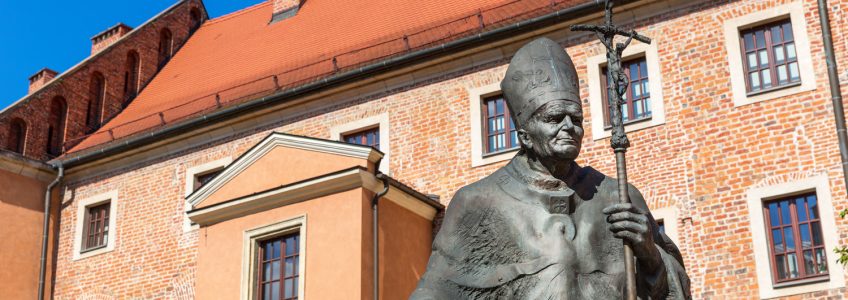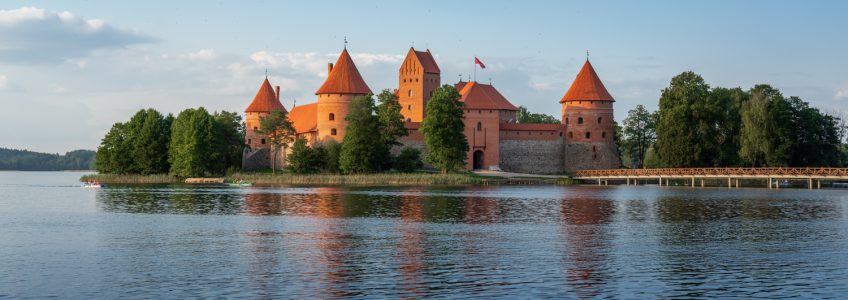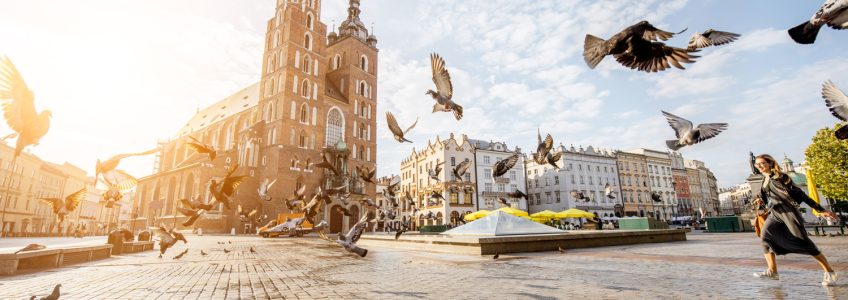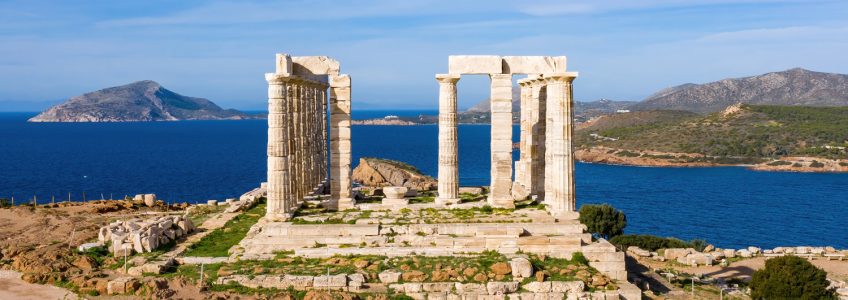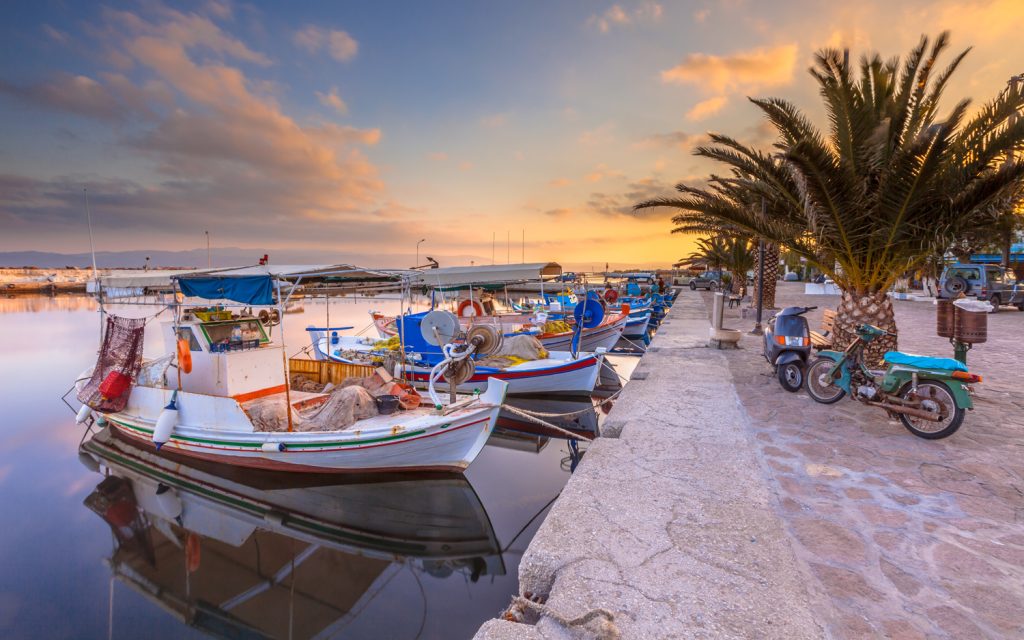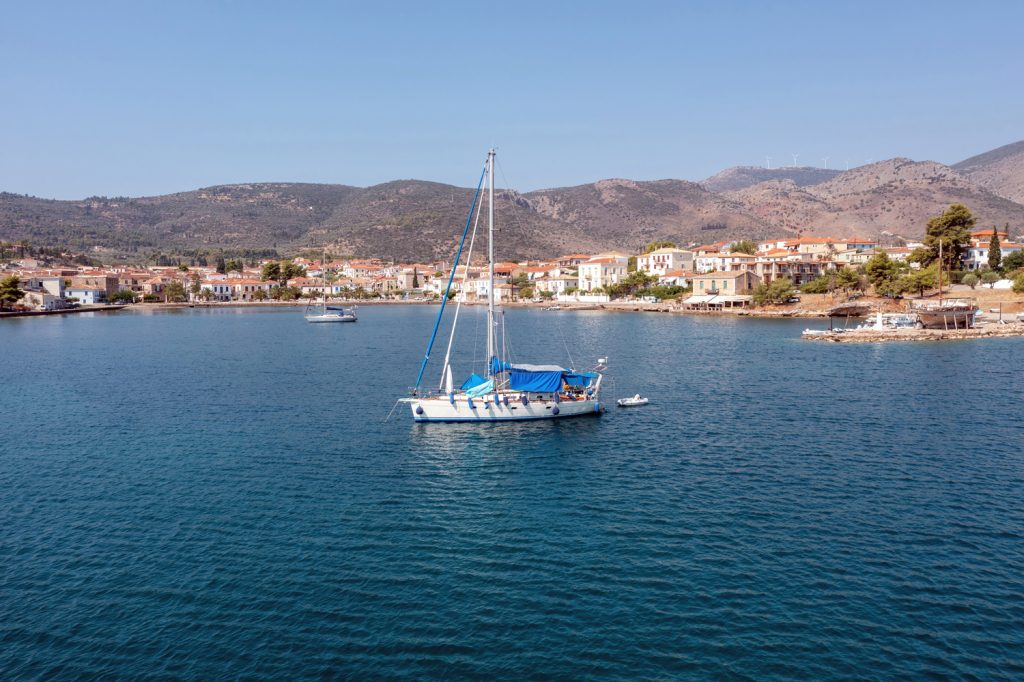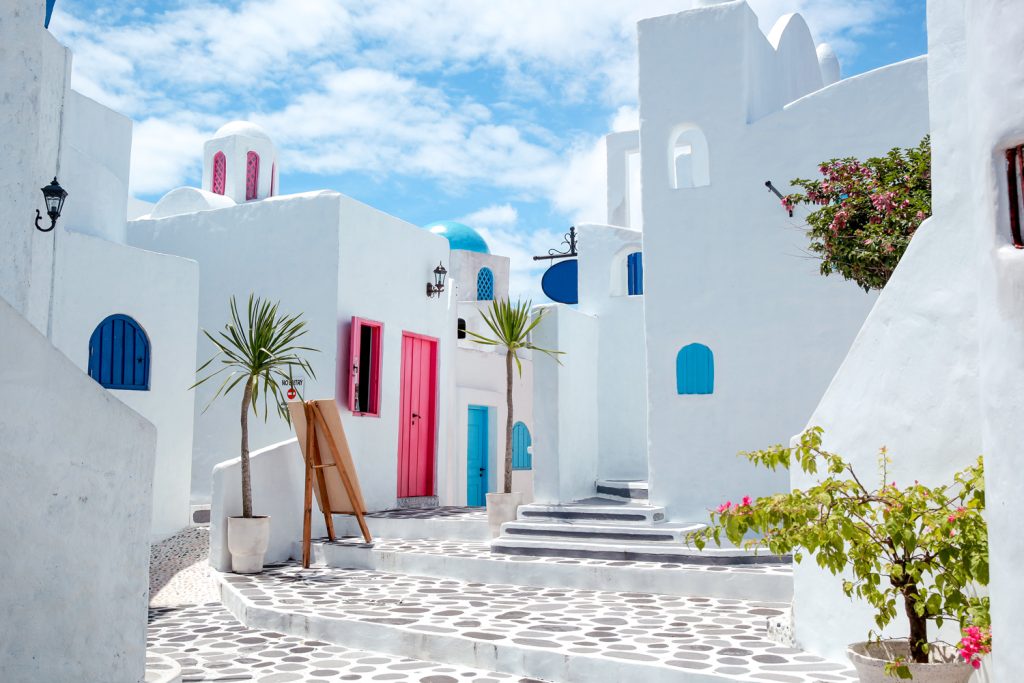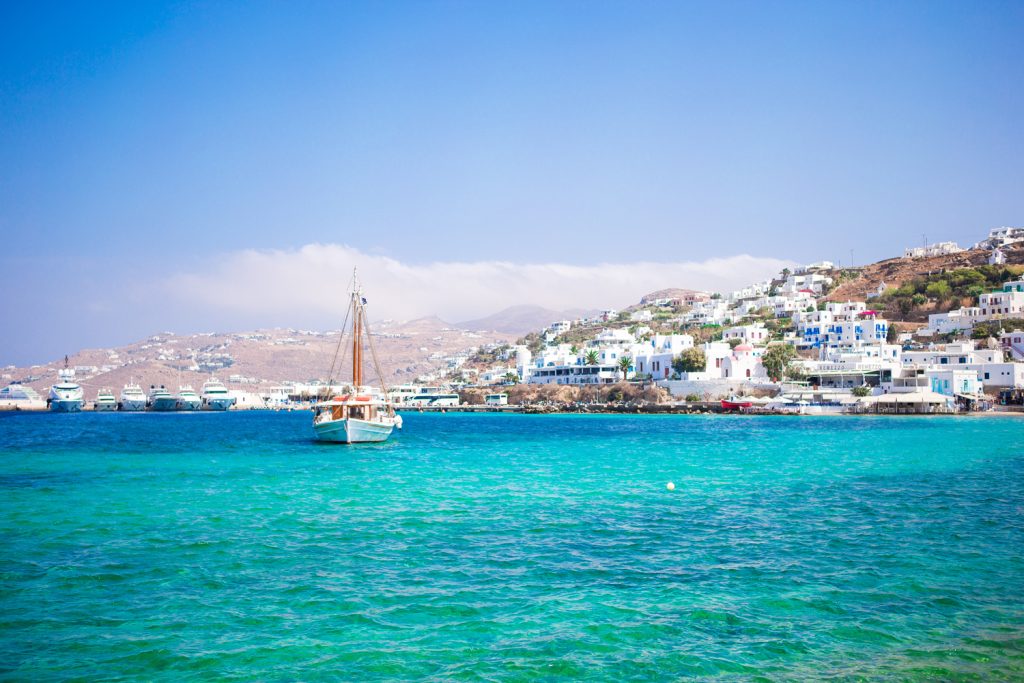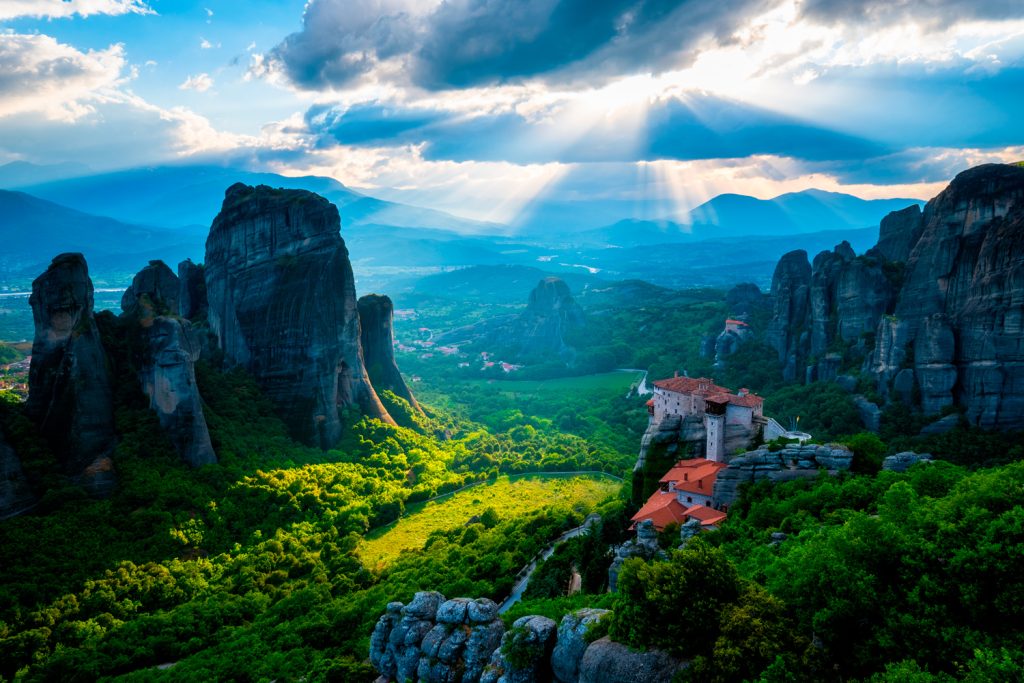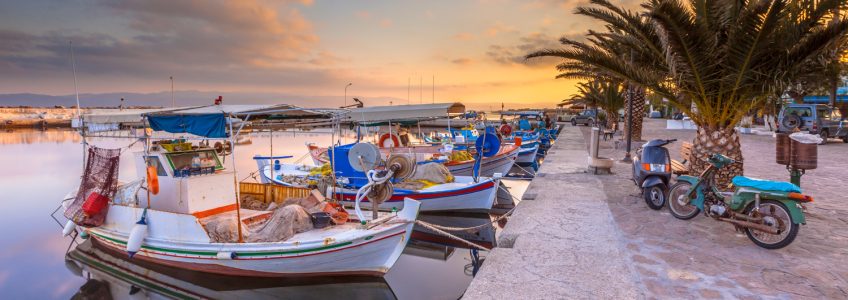Poland – Central Europe
Along the Baltic Coast: Poland, Lithuania, Latvia, Estonia, Finland
Along the Baltic Coast: Poland, Lithuania, Latvia, Estonia, Finland
(12 days)
• Warsaw • Torun • Malbork • Gdansk • Sopot • Gdynia • Gierloz • Suwalki • Kaunas • Trakai • Vilnius • Siauliali • Rundale • Riga • Sigulda • Tartu • Tallinn • Helsinki
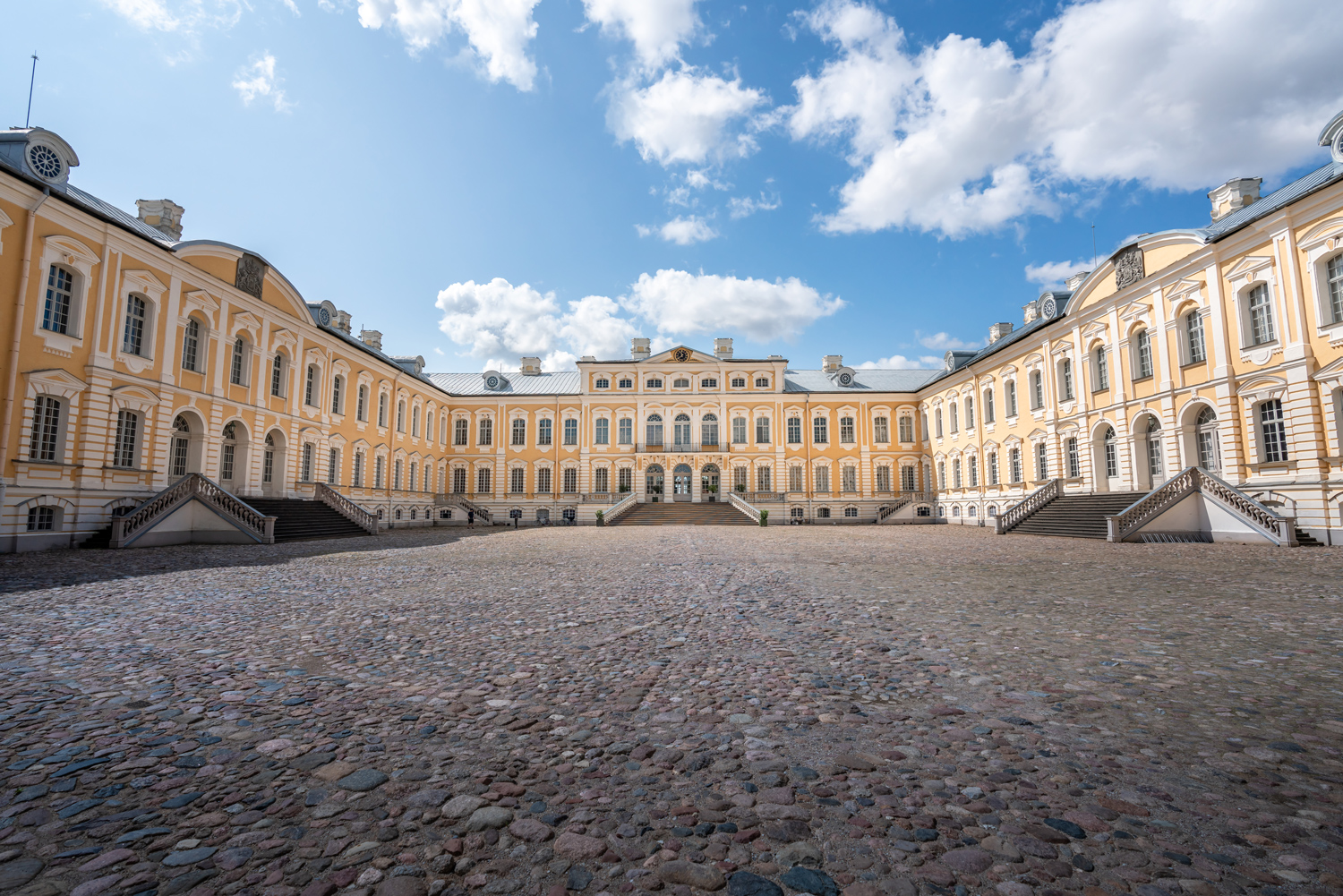
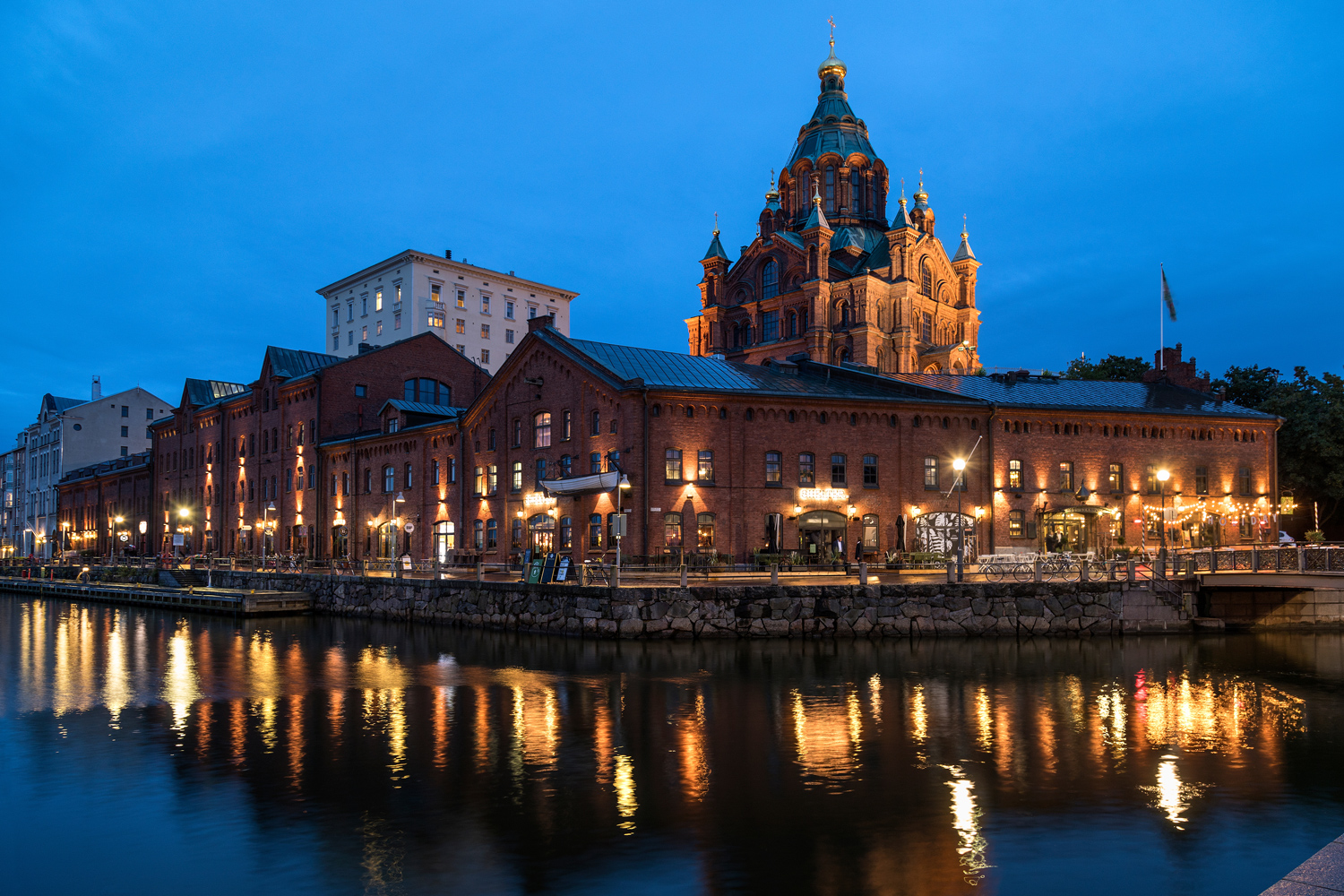

Itinerary
Arrival to Warsaw, the capital of Poland; meeting with the guide at the Frederic Chopin airport; transfer to the hotel; time to refresh; welcome dinner.
DAY 2 – WARSAW
Warsaw city sightseeing: transfer to the Lazienki Royal Park with the Palace on the Water and the Island Theatre; from there route leads through Warsaw City with skyscrapers and monumental architecture from communism time,
then the Grand Theatre and Opera House, Jablonowski Palace, Tomb of Unknown Soldier and Saski Park, Town Hall, Umschlagplatz and the Monument of Heroes of Ghetto; transfer to the Old Town (UNESCO Heritage); visit to the Royal Castle and the cathedral, Market Square, and defensive walls with barbican; further walk to the New Town: The Krasinski Palace, Palace of Justice and Monument of Warsaw Uprising; dinner.
DAY 3 – WARSAW – TORUN – MALBORK
Transfer to Torun, the best example of medieval gothic town (UNESCO Heritage) and birthplace of great Polish astronomer Nicolaus Copernicus, who made a crucial discovery that the Earth is not the centre of universe; walk along the Old Town, visit to the Copernicus House and the Cathedral with a bell tower offering a splendid view over the city; optional visit to a gingerbread factory and time for a souvenir hunt; further transfer to Malbork; dinner.
DAY 4 – MALBORK – TRICITY (GDANSK – SOPOT – GDYNIA) – MALBORK
Morning departure for Gdansk; transfer to Westerplatte Peninsula guarding an entrance to the Gdansk harbour, a place where the WW II began, and the Polish Military Transit Depot was fighting against 13 times more
numerous German enemy; continue to the Gdansk Shipyard, the birthplace of Solidarity movement and stop by the Monument to Fallen Ship Workers (a homage to dockyard workers who died in December 1970) and a famous gate to the shipyard; Guided Gdansk Old Town Sightseeing – visit to the Europe’s biggest gothic brick church of St Mary, picturesque Dluga Street, Golden Gate, the Town Hall, Neptune fountain, the Arthur’s Court, the Green Gate overlooking Motlawa River, Old Crane; optional visit to the Arthur’s Court museum and the Amber Chamber for an amber polishing demonstration; free time for lunch and souvenir hunt; transfer to Oliwa Park with cathedral – the longest Cisterians church in the world, participation in unique organ concert; transfer to Gdynia harbor for a quick photo shot; transfer to Sopot, walk around the famous resort and along the longest wooden pier in Europe, elegant dinner in the fancy restaurant located at the end of the pier; evening transfer to Malbork.
DAY 5 – MALBORK – GIERLOZ – SUWALKI
Guided tour in Malbork Castle – the medieval capital of the Teutonic Order Knights in Eastern Europe and the biggest red brick gothic castle in the world (UNESCO Heritage); transfer to Gierloz; stop in Swieta Lipka in Jesuit monastery; drive to Gierloz; guided sightseeing of Wolfschanze – the Headquarter of Hitler on the Eastern front during the II WW; transfer through picturesque Masuria Region famous for its lakes and green forests to Suwalki; dinner.
DAY 6 – SUWALKI – KAUNAS (LITHUANIA) – TRAKAI – VILNIUS
Morning departure via Lithuanian border to Kaunas; short sightseeing of the city, visit to the Vytautas Church, dedicated to Virgin Mary, and walk along Freedom Avenue (Laisves Aleja), which is believed to be the longest pedestrian walkway in Europe; transfer to Trakai, the ancient capital of Lithuania and visit to the famous insular Trakai Castle – an excellent example of Gothic architecture; further drive to Vilnius; dinner
DAY 7 – VILNIUS
Vilnius City sightseeing, including Gates of Dawn, famous Gediminas castle, the Cathedral, charming St Anna Church, Vilnius University, and its inner yards – one of the oldest and most famous establishments of higher education in Eastern and Central Europe, which was founded in 1579 , the Hill of 3 crosses; afternoon to your leisure; dinner in a local restaurant.
DAY 8 – VILNIUS – SIAULALI – RUNDALE (LATVIA) – RIGA
Morning departure to Riga (Latvia); on the way visit to the most saint place in Lithuania – the Hill of Crosses, the national pilgrimage center with a huge number and variety of crosses brought by Christian pilgrims from all over the
world; entering the Latvia country; stop in Rundale Palace, one of the most outstanding monuments of Baroque and Rococo art in Latvia, built in XVIII century as a summer residence of Duke Ernst Johann of Courland, designed by the Italian architect B.F. Rastrelli, the main architect of Saint Petersburg these times; arrival to Riga; dinner.
DAY 9 – RIGA
Riga is famous for its architecture from 19th century and its Art Nouveau style (UNESCO). The city’s pearl of art is the Blackheads House, a striking gothic building with a Dutch renaissance façade. We would see also the Dome Cathedral (the largest place of worship in the Baltics), Freedom Monument and Powder Tower. Afternoon at your disposal or optional tour to the Latvian seaside resort – Jurmala, located 15 km from Riga: dinner.
DAY 10 – RIGA – SIGULDA – TARTU (ESTONIA) – TALLINN
Morning transfer to Sigulda to see the ruins of the castles of Sigulda, Cesis and Turaida, visit to Turaida’s museum – home of numerous statues and sculptures spread in a park. Transfer to Tartu, the oldest town in Estonia already
mentioned in XI century. Walk around the historic centre: university, town hall, ruins of the cathedral, bridges of Angel and Devil. Evening arrival to Tallinn. Dinner.
DAY 11 – TALLINN
Tallinn city sightseeing: Toompea Castle, city walls with Kiek in de Kok – 45m, six-storey cannon tower from 15th century, Dome Church, the oldest church in Estonia founded in 1219. In the Town Hall Square we would see town hall and a famous pharmacy (one of the oldest continuosly running pharmacies in Europe since 1422). Afternoon free to your leisure or an optional tour to baroque Kadriorg Palace. Farewell dinner.
DIA 12 – TALLINN– HELSINKI (FINLAND)
Morning ferry to Helsinki; Helsinki city sightseeing – the historical centre, the Presidential Palace, City Hall, the Parliament buildings, Finlandia Hall and the Opera House; stops in the park with the Sibelius Monument and, when
possible, at the Temppeliaukio Church (church in the rock). Transfer to the airport. Departure.
END OF OUR SERVICES
- Transfer to/from the airport
- Transportation during the trip
- 11 nights in double rooms: 11 nights in hotels (2 in Warsaw, 2 in Malbork, 1 in Suwalki, 2 in Vilnus, 2 in Riga, 2 in Tallin)
- 11 x Half Board (breakfast and dinner): the first meal is a dinner on the day of arrival, the last meal is a breakfast on the day of departure
- English speaking guide
- All fees and entrances
Contact our experts now about this plan
Jewish Heritage Tour in Poland
Jewish Heritage Tour in Poland
9 days/8 nights
WARSAW – TREBLINKA – LODZ – LUBLIN – MAJDANEK – LEZAJSK – KRAKOW – AUSCHWITZ – WIELICZKA
Discover the Jewish Heritage in Poland. From the 11th century till the beginning of the World War II, Poland was known as the cultural and spiritual centre of European Jews. Many of the Polish Jews gained the fame all around the world. As examples we can mention: Elimelech Weisblum of Lizhensk one of the great founding Rebbes of the Hasidic movement, Arthur Rubinstein (pianist), Wladyslaw Szpilman (pianist, his story is the base of the Polanski’s movie “The Pianist”), Ludwik Zamenhof (creator of the international language Esperanto), Helena Rubinstein (the creator of the cosmetics brand) or founders of future Israel state that were born in territory of Poland like Ben Gurion, Menachem Begin, Jochanan Bader. Everyone knows MGM Studios, but not many knows that Samuel Goldwyn was born in Poland. Everyone knows Max Factor, but only few knows that Maksymilian Faktorowicz was born in Poland. Even nowadays some widely known personalities, may find they roots in Poland, for example a famous architect Daniel Libeskind, author of master plan of the reconstruction of the World Trade Center site in Lower Manhattan and designer of One World Trade Center (Freedom Tower). So, if you are interested in the legacy of Polish Jews this travel is just for you. Go for it!
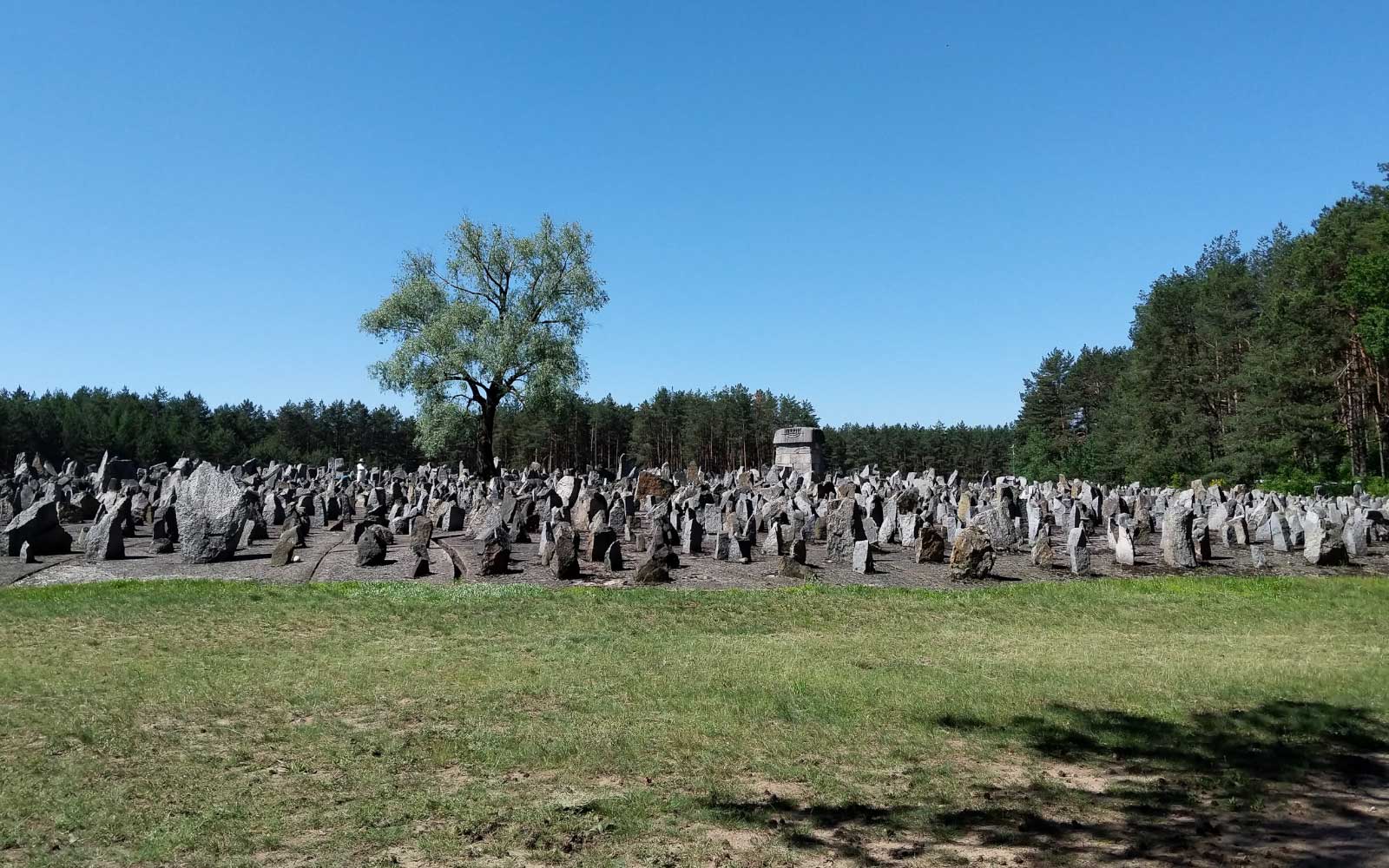
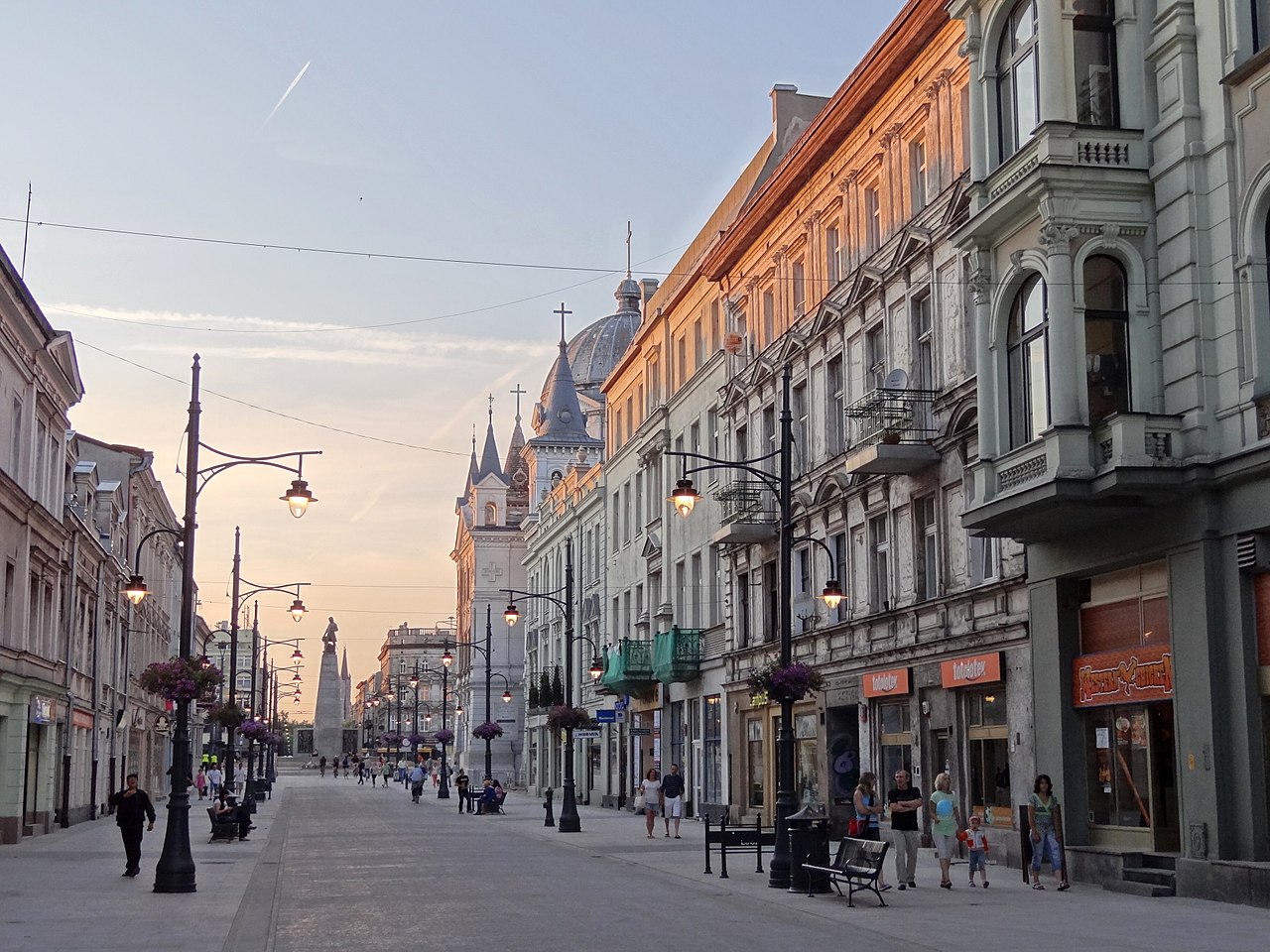
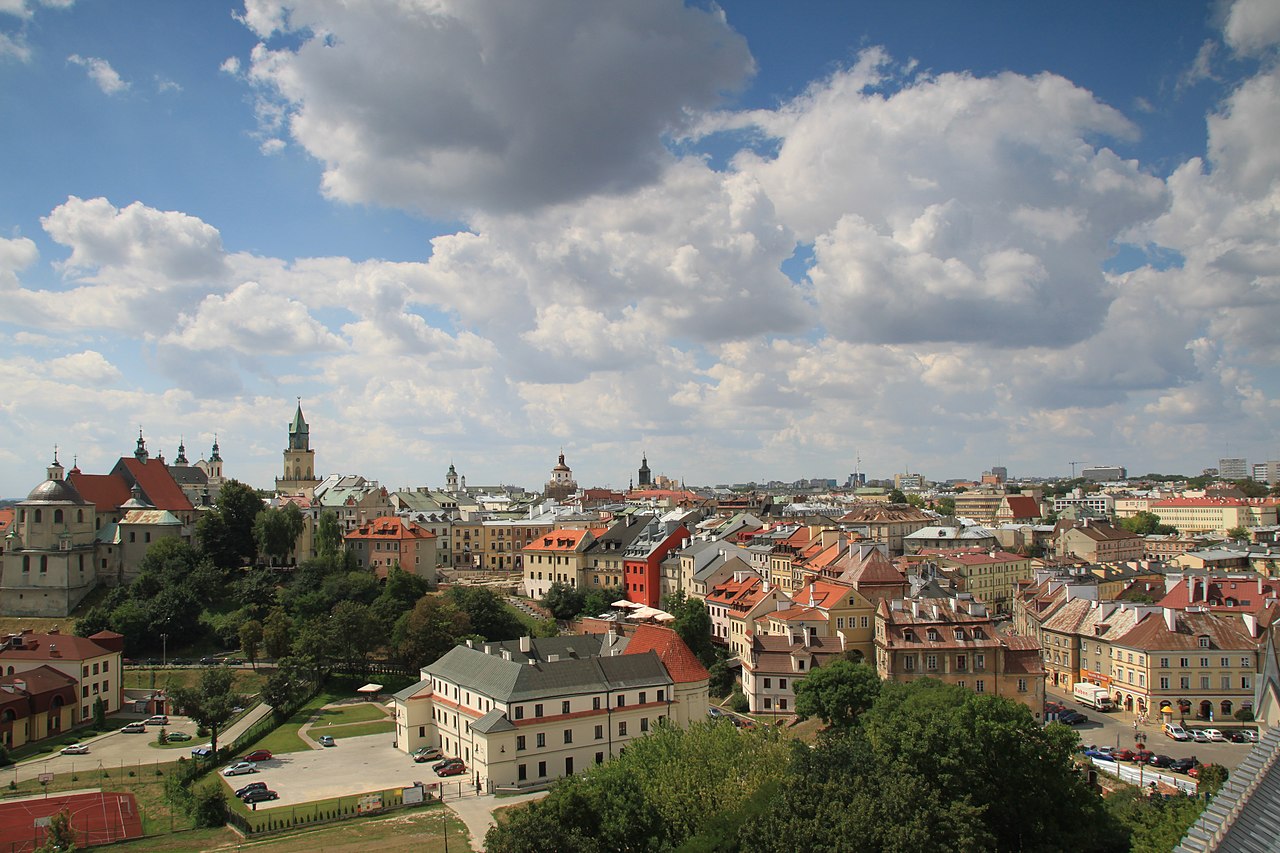
Itinerary
Arrival in Warsaw. Transfer to the hotel and overnight in Warsaw.
Day 2, Warsaw
Warsaw City Tour allows us to immerse ourselves in and observe the many contrasts of the Polish capital city. The tour starts with a walk around the Lazienki Royal Park. Here we will see the famous monument dedicated to Frederic Chopin, the Palace on the Water, and the Theater on the Island. We will continue with transfer to the Old Town (UNESCO) and a short walk around the Old Town: from the Royal Castle, passing next to the Saint John Cathedral, the Market Square and the barbacane to the New Town. We will continue to the Krasinski Palace, the Supreme Court building. Our itinerary will continue with the Grand Theatre and the National Opera, the Jablonowscy Palace, the Tomb of the Unknown Soldier and the Saxon Garden. Overnight in Warsaw.
Day 3, Warsaw – Treblinka – Warsaw
During the excursion we will see the old Jewish part of the city, we will visit the synagogue and the Kirkut Jewish cemetery. We will also see other places related to the history and tradition of Polish Jews, including the area of the former ghetto that was completely destroyed during the Second World War and the monuments that commemorate the martyrdom of the Jews in the times of the Holocaust. Visit POLIN Museum that present the history of Polish Jews through centuries, that is considered to be one of the best museums in Europe. In the afternoon: Excursion to Treblinka (4h) to see the museum in the former concentration and extermination camp built by the Germans in the Polish lands during the second world war. In just 16 months when the camp in Treblinka was in operation, it is estimated that almost 800,000 people were killed in its gas chambers, which makes it the second largest Nazi death camp apart from Auschwitz. Return to Warsaw. Overnight in Warsaw.
Day 4, Warsaw – Lodz – Warsaw
Morning train transfer to Lodz – one of the biggest Polish cities. During your visit you would find traces of the four cultures: Polish, Jewish, German and Russian that coexisted there and became one. Furthermore, you would admire modernist and industrial arquitecture. Thanks to its numerous factories, Lodz was also called the „Polish Manchester”. During the route you would see the Old Town and the industrial complex of Poznanski family, the famous Manufaktura. Visit to the museum of the Poznanski Factory, one of the richest Jews in the city of its time. In the end, you would discover Piotrkowska Street, the most popular walkway full of shops, pubs, restaurants, and sculptures that commemorate famous inhabitants of Lodz. Finally, we will visit the sites related to the Jewish heritage of Lodz, the cemetery, and the remains of the ghetto. Lodz is also a birthplace of famous pianist Arthur Rubinstein and the famous architect Daniel Libeskind, author of master plan of the reconstruction of the World Trade Center site in Lower Manhattan and designer of One World Trade Center (Freedom Tower). Return to Warsaw. Overnight in Warsaw.
Day 5, Warsaw – Lublin
Morning train transfer to Lublin, the largest city in southeastern Poland, with a long history and very interesting historical buildings. In was here where the Lublin Union was signed in 1569 – a pact that sealed the constitutional union of the Kingdom of Poland and the Grand Duchy of Lithuania creating a free republic associated with a single Parliament, an elected king, a currency, and ethnic and religious tolerance. The Lublin sites stand out as physical reminders of an important milestone in the development of the principles of European democracy, four centuries
before the EU was created. During the walk through the beautiful old town, we will discover many interesting monuments to finish next to the castle. Lublin is one of the Polish cities where the Hebrew culture could develop freely over the centuries, so first Jewish settlers came over already in XV century. Flourishing Hebrew sciences caused the city to be called the Jerusalem of the Polish Kingdom, and even the Jewish Oxford as it was here when in the 16th century, the first Hebrew books and prayer books were published. The Jewish legacy of Lublin could be seen in the castle and old town area as well as in the old University of Wise Men (Jesziwas Chachmej Lublin), in which the old assembly hall is preserved, that formerly operated as a synagogue. Overnight in Lublin.
Day 6, Lublin – Majdanek – Lezajsk – Krakow
In the morning visit to the museum in Majdanek, an extermination camp built by Nazi Germany, in German-occupied Poland 4 km from the city of Lublin, near the border with Ukraine. This proximity meant that the Germans did not have time to destroy the field in retreat, so it is preserved as it was at the time of World War II. Transfer from Lublin to Lezajsk where there is a tomb of Rabbi Elimelech Weissblum of Lezajsk (Lizhensk) a Polish rabbi and one of the great founding Rebbes of the Hasidic movement. Further transfer to Krakow. Overnight in Krakow.
Day 7, Krakow
Krakow is the cultural capital of Poland with Old Town listed as UNESCO Heritage. During the tour you will see Barbican and defensive walls with Florian’s Gate, the Main Market Square with Sukiennice Cloth Hall, St Mary’s Church, and Town Hall Tower. We would proceed to the Jagiellonian University, pass by Archbishop Palace (where John Paul II used to live) as well as St Andrew’s Church and St Peter and Paul’s Church to reach the Wawel Hill. During the walk we will taste “obwarzanek” (bagel) a typical Krakow pastry, that was brought by Jewish population to North America and right now is extremely popular mostly in New York and Montreal areas. In the afternoon we will explore Krakow Kazimierz (Jewish District) known from Schindler’s List. Kazimierz used to be a separate town close to medieval city of Krakow. It was mostly populated by Jewish community. Throughout years it became Krakow’s district, but the abundance of markets, synagogues and kirkuts (Jewish cemeteries) shaped character of this part of town. As Kazimierz depicts the history of Polish Jews, some shots of Steven Spielberg Schindler’s List were captured here. During this tour you would discover this charming part of Krakow with its monuments and complexed history. Visit to the museum “Oscar Schindler’s Factory” in Krakow included. During our trip, you will have the opportunity to learn about history, monuments, and impressive culture in a part of Krakow still little known to tourists. Overnight in Krakow.
Day 8, Krakow – Oswiecim (Auschwitz) – Wieliczka – Krakow
Transfer to Oswiecim. Visit the museum of Auschwitz – Birkenau (UNESCO), the famous concentration camp and extermination, a symbol of terror, genocide, and holocaust. It was established by the Nazis in 1940, in the suburbs of the city of Oswiecim (Auschwitz in German) which, like other parts of Poland, was occupied by the Germans during the World War II. A visit to concentration and extermination camp museum might help you to comprehend what incomprehensible.
Transfer to Wieliczka the most beautiful and the oldest operating salt mine in the world (UNESCO Heritage). From over 700 years it was a source of Polish fortune and a physical fundament of culture. Today Wieliczka is the most willingly visited Polish tourist object with magnificent chapels, charming underground lakes and original tools and equipment. During this tour you could see a number of excavated chambers on 3 levels adorned with beautiful sculptures made of salt as well as a salt museum. Transfer to Krakow. Overnight in Krakow
Day 9, Krakow
Transfer to the airport in Krakow
- Visit places related to Jewish heritage in Poland in Warsaw, Lodz, Krakow, Lezajsk, Lublin.
- Find out more about Polish Jews that get popularity in the world like Arthur Rubinstein, Wladyslaw Szpilman (his story is the base of the Polanski’s movie “The Pianist”), Ludwik Zamenhof (creator of the international language Esperanto) or Helena Rubinstein (the creator of the cosmetics brand), Elimelech Weisblum of Lizhensk one of the great founding Rebbes of the Hasidic movement or famous architect Daniel Libeskind.
- Visit UNESCO Heritage Sites in Warsaw, Auschwitz-Birkenau, Krakow, Wieliczka.
- Pay tribute to the victims of WW2 in death camps in Treblinka, Auschwitz and Majdanek.
- Discover the Polish origin of “obwarzanek” (bagel) a typical Krakow pastry, that was brought by Jewish population to North America and right now is extremely popular mostly in New York and Montreal areas.
- Visit POLIN Museum of the History of Polish Jews considered to be one of the best museums in Europe, that was awarded European Museum of The Year 2016 winning against 49 candidates from 24 countries.
- Visit to the museum “Oscar Schindler’s Factory” in Krakow that present the life in Krakow before and during WW2.
Package includes:
- 8 nights in DBL/TWIN rooms in centrally located hotels:
- 4 nights in Warsaw
- 1 night in Lublin
- 3 nights in Krakow
- 8 x buffet breakfast in all hotels
- Degustation of “obwarzanek” (bagel) a typical Krakow pastry
- Transfer from / to airport
- Transportation during a tour by train and private car / minivan
- All excursions as per the itinerary
- Local English-speaking guides
- Warsaw
- Lublin
- Krakow
- Auschwitz-Birkenau
- Wieliczka
- Entrances to:
- POLIN Museum of the History of Polish Jews
- Treblinka concentration & extermination camp museum
- Factory Museum in Lodz
- Majdanek concentration & extermination camp museum
- Museum “Oscar Schindler’s Factory”
- Auschwitz-Birkenau concentration & extermination camp museum
- Wieliczka Salt Mine
Price excludes:
- Meals (except breakfast)
Contact our experts now about this plan
Marian Shrines of Europe – Poland, Czech Republic, Austria, Hungary, Bosna & Herzegovina, Croatia
Marian Shrines of Europe – Poland, Czech Republic, Austria, Hungary, Bosna & Herzegovina, Croatia
(21 days)
Highlights:
Visit the most important Marian shrines of Central Europe together with other top attractions of this part of old continent. See one of the world’s oldest Marian shrines of Jasna Gora in Czestochowa, or one of the world’s biggest one in Lichen. Climb the Czech Holy Mountain (Svata Hora) or its Austrian equivalent in Mariazell. Pass Esztergom, called “Hungarian Vatican” to reach famous Medjugorje in Bosnia and Herzegovina, well known pilgrimage place related to apparitions of Virgen Mary. One a way discovers 5 capitals, many charming towns, and beautiful landscapes as well as many valuable monuments of culture and nature listed the UNESCO Heritage sites.

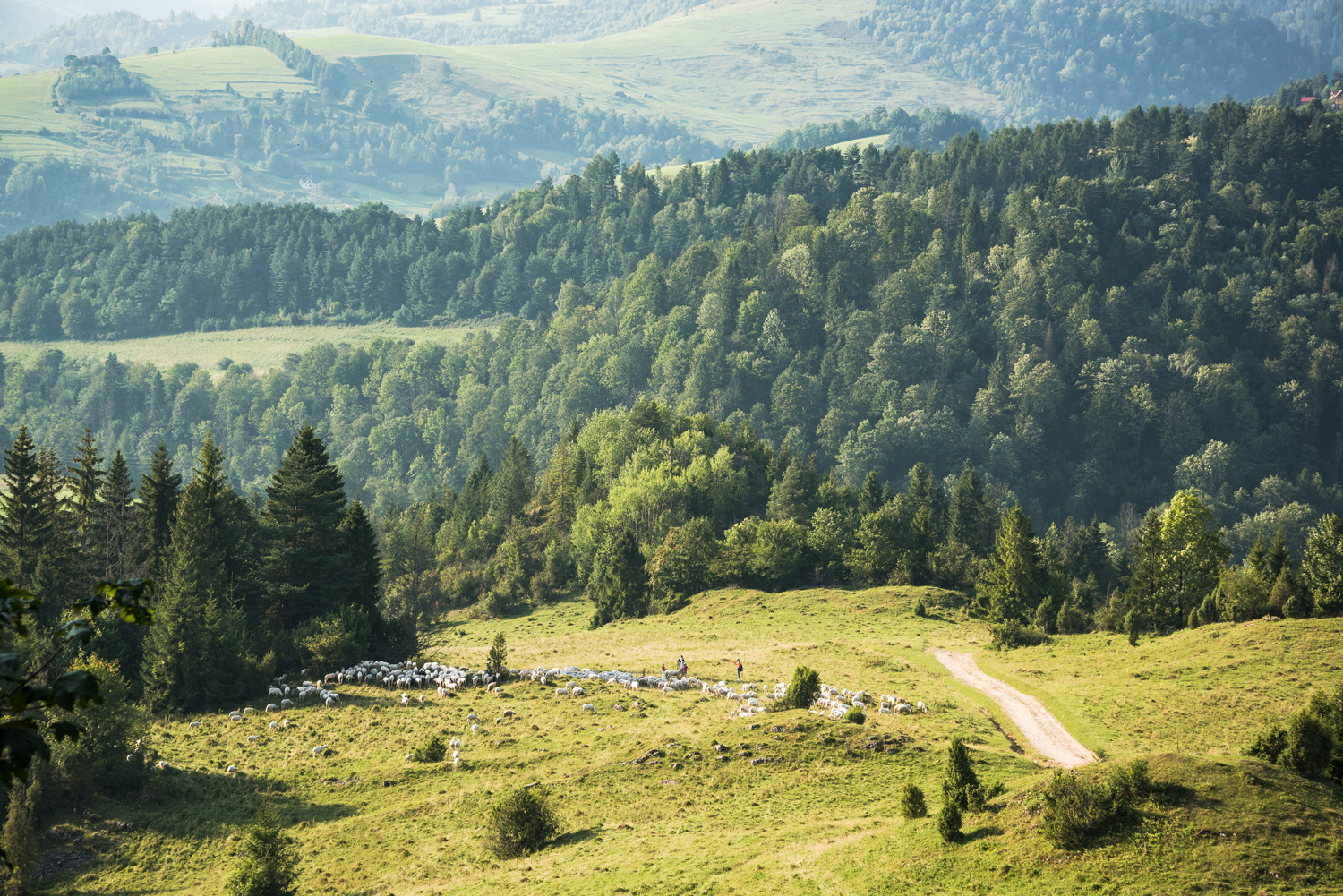

Itinerary
Arrival to Warsaw; welcome dinner. Transfer to the hotel and overnight in Warsaw.
DAY 2 – WARSAW
Explore Warsaw, the Polish capital, and its main sights. Stroll through the manicured greens of Lazienki Royal Park with its monument of the famous composer Frédéric Chopin, Island Amphitheatre, and the neoclassical Palace on the Water. Transfer to the old Jewish quarter and see the remnants of the former Jewish Ghetto and Holocaust memorials like Umschlagplatz and the Monument to the Ghetto Heroes. In the Old Town, a UNESCO Heritage Site, walk along the cobbled streets from the Royal Castle past St John’s Cathedral through the Market
Square and Barbican to the New Town, soaking up the medieval atmosphere. Continue onto the Saxon Gardens and Pilsudski Square, the site of John Paul’s II celebrated mass during his first pilgrimage to Poland, when he spoke the famous words: “May the Holy Spirit descend and renew the face of the Earth, this Earth..” – a message which became true after the fall of communism in Poland. Overnight in Warsaw.
DAY 3 – WARSAW – NIEPOKALANOW – LICHEN
Transfer from Warsaw to Niepokalanow, a Franciscan catholic community founded by Friar Maximilian Kolbe in 1927. Visit the Shrine of St Maximilian Kolbe – a great promotor of consecration and entrustment to Mary, who was later canonized as a martyr-saint for sacrificing his life in a Nazi death camp in Auschwitz for a fellow prisoner. Continue the journey towards Lichen Stary. Visit the shrine to the Virgin of Lichen with its famous Way of the Cross (Golgotha), the monument to Pope John Paul II and the shrine blessed by the Pope – the biggest one
in Europe, the seventh biggest in Europe and the eleventh biggest in the world. Enjoy a stroll with your local guide around the sanctuary. Overnight in Lichen.
DAY 4 – LICHEN – CZESTOCHOWA – KRAKOW
In the morning transfer to Czestochowa, home to the most important Polish shrine of Virgin Mary which attracts millions of pilgrims each year and was also visited by Pope John Paul II. Visit the monastery of Jasna Gora with the famous altar of the Black Madonna, the monument to the parents of the Pope and the inscription on the door in his honor. We continue our journey towards Krakow. Overnight in Krakow.
DAY 5 – KRAKOW – LAGIEWNIKI
Krakow, the former royal capital, fully deserves its position on the first ever published UNESCO World Heritage List. The city has many links to John Paul II who lived here in his youth and later was appointed the bishop and
Metropolitan of Krakow. Visit the Wawel Hill with the XIV century cathedral and the Wawel Royal Castle with an arcaded courtyard – the former seat of Polish kings. Our tour continues through the Market Square in the Old Town with its iconic landmarks such as Sukiennice Cloth Hall, St Mary’s Church, and Town Hall Tower. Continue onto the medieval fortifications of Barbican with Florian’s Gate. In the afternoon visit the Shrine of Divine Mercy in Krakow-Lagiewniki blessed by John Paul II. Although it is the newest sanctuary in Krakow it attracts thousands of pilgrims due to the relics of St Faustina buried here. Visit the monastery where St Faustina Kowalska lived and the basilica with the famous image of Merciful Jesus. Free time to attend a mass at the shrine. Overnight in Krakow.
DAY 6 – KRAKOW – KALWARIA ZEBRZYDOWSKA – WADOWICE – WROCLAW
Transfer to Kalwaria Zebrzydowska (UNESCO), a unique sanctuary of 42 picturesque chapels scattered around the surrounding hills of Beskidy Mountains, resembling the landscape of the Holy Land. Kalwaria’s chapels symbolize the perfect union of the worldly with the spiritual and religious values. Transfer to Wadowice, the birthplace of Pope John Paul II. Visit Karol Wojtyla’s childhood home and the basilica where was baptized. Continue the journey towards Wroclaw. Overnight in Wroclaw.
DAY 7 – WROCLAW – SWIDNICA – WROCLAW
Explore Wroclaw – a City of a Hundred Bridges. Its rich history and medieval atmosphere attract millions of tourists every year. Start at the main entrance of the XIII century Cathedral of St John the Baptist located on the Ostrow Tumski
island – the oldest part of Wroclaw. Crossing the Tumski bridge we arrive in the Old Town with a cathedral and Wroclaw University, famous for its representative baroque lecture hall Aula Leopoldina. The next highlight on our route is the Centennial Hall (UNESCO). Transfer to Swidnica and visit the Evangelical Church of Peace (UNESCO) – built from wood, straw, clay, and sand in XVII century. Overnight in Wroclaw.
DAY 8 – WROCLAW – CZERMNA – PRAGUE
Transfer to Czermna where we will visit the Chapel of Skulls, one in its kind place in Poland and one of only three similar chapels in Europe. It’s a mass grave of the victims of the Thirty-Year War and the Silesian Wars as well as of famines and cholera epidemics. Every bone in the chapel is authentic and the skulls of those who created the chapel were placed in its the centre, on the altar. Transfer to Prague. Enjoy the afternoon at leisure. Overnight in Prague.
DAY 9 – PRAGUE
Explore Prague, described as “the golden city”. Transfer to the Prague Castle, the ancient seat of the kings, now housing the Presidential Palace and various museums. Visit the Royal Castle and St Vito’s Cathedral with the funeral chapel of St Wenceslas – the patron saint of Czech Republic. Stroll around Hradcany Hill and its remarkable baroque cloister of Loreto, the Archbishop’s Palace, and the Golden Street. Crossing Charles Bridge, we continue our walk along the Royal Route until the Old Town with the Market Square and the Town Hall Tower, to end on St Wenceslas Square. Overnight in Prague.
DAY 10 – PRAGUE – SVATA HORA – CESKY KRUMLOV
Transfer to Svata Hora – the oldest and most important pilgrimage site of Marian devotion in Czech Republic. Then transfer to Cesky Krumlov (UNESCO Heritage), and stroll through the medieval town located on the banks of Vltava
river. Overnight in Cesky Krumlov.
DAY 11 – CESKY KRUMLOV – MARIAZELL – VIENNA
Transfer to Mariazell, one of the most important pilgrimage sites of Marian devotion in Europe, famous for the ‘silent candles’ situated in the side chapel. Each one symbolizes a central-European country which was ruled by the Soviet
Union. The candles were lit for the first time in May 1990 when the last of the countries were liberated from the communist rule. Transfer to Vienna. Overnight in Vienna.
DAY 12 – VIENNA
In the morning visit the city of Vienna: stroll along Ring Strasse, Vienna’s main boulevard known for such magnificent buildings as the Museums of Fine Arts and Natural History, the State Opera House, the Parliament, the Burgtheatre, the Town Hall and the Votive Church. A short walk will take in the most beautiful parts of the city centre: museum district (Museums quartier), Hofburg – winter-residence of the Habsburgs, Kärtner Strasse (shopping street) and the Stephan’s Cathedral. Afternoon at leisure. Overnight in Vienna.
DAY 13 – VIENNA – ESZTERGOM – BUDAPEST
Transfer to Esztergom, called the “Hungarian Vatican”. Visit the biggest and the most important basilica in Hungary with the largest collection of church dowry in the country. In the afternoon transfer to Budapest. Overnight in Budapest.
DAY 14 – BUDAPEST
Visit the Hungarian capital – Budapest. Start in the district of Pest along the Andrassi Avenue to see the Opera House and the Heroes Square. Filled with statues of the most famous Hungarian kings and dukes, it commemorates a 1000-year anniversary of the city. Continue our walk through Deak Square, see St Stephen’s Basilica and the impressive neo-gothic House of Parliament. Visit Buda, the ancient capital of Hungary, to see the Fisherman’s Bastion from where you can enjoy the beautiful panorama. Stop at St Matthias Church. Overnight in Budapest.
DAY 15 – BUDAPEST – ZAGREB
Transfer to Zagreb – the capital of Croatia. Visit the Upper Town with its gothic cathedral, the beautiful and ornate St Catherine’s church and the impressive St Mark’s church with its famous color-tiled roof. Continue to the medieval Stone Gate and “Dolac” – an open-air market which is a must-see for all visitors. Take a scenic drive to the Lower Town with its colorful turn-of-the-century architecture. Its best example is the lovely building housing the Croatian National Theatre and Opera House. Overnight in Zagreb.
DAY 16 – ZAGREB – PLITVICE LAKES – SPLIT
Transfer to Plitvice, one of the most famous national parks of Croatia (UNESCO). A visit to the Plitvice Lake National Park (entrance included) allows us to admire a beautiful landscape of 16 lakes located on different levels and connected with 92 waterfalls and cascades. In the afternoon transfer to Split. Overnight in Split.
DAY 17 – SPLIT
Explore Split, a charming city on the Adriatic Coast. Its historical old town with the III century Diocletian´s Palace was declared a UNESCO World Heritage site. Explore one of the worlds´s most impressive Roman monuments within the
atmospheric old city walls and a maze of medieval stone streets filled with restaurants, cafes, and shops. Overnight in Split.
DAY 18 – SPLIT – MEDJUGORJE
Transfer to Medjugorje, a small town in Bosnia and Herzegovina. Visit one of the Christian worlds´s most famous monasteries with a local guide. Walk up to the Apparition Hill where Virgin Mary appeared to the village children. Overnight in Medjugorje.
DAY 19 – MEDJUGORJE
Free day to pray in Medjugorje. Overnight in Medjugorje.
DAY 20 – MEDJUGORJE – MOSTAR – DUBROVNIK
In the morning transfer to charming Mostar (UNESCO) to see its famous bridge “Stari Most” (“Old Bridge”). This iconic XVI century structure was destroyed during the Bosnian War and meticulously reconstructed, preserving its original beauty. In the afternoon return to Croatia for a panoramic walking tour of the ancient town of Dubrovnik, surrounded by the shimmering waters of the Adriatic. We will see the most important examples of Medieval Art: Onofrio’s Fountain – the first landmark you will see immediately after walking through the grand Pile Gate, Franciscan, and Dominican Monasteries, Sponza Palace and Rector’s Palace and the baroque cathedral of Dubrovnik. Overnight in Dubrovnik.
DAY 21 – DUBROVNIK
Transfer to the airport. Departure from Dubrovnik.
END OF OUR SERVICES
- Transfer to/from the airport
- Transportation during the trip
- 20 nights in double rooms: 20 nights in hotels (2 in Warsaw, 1 in Lichen, 2 in Krakow, 2 in Wroclaw, 2 in Prague, 1 in Cesky Krumlov, 2 in Vienna, 2 in Budapest, 1 in Zagreb, 2 in Split, 2 in Medjugorje, 1 in Dubrovnik)
- 20 x Half Board (breakfast and dinner): the first meal is a dinner on the day of arrival, the last meal is a breakfast on the day of departure
- English speaking guide
All fees and entrances
Contact our experts now about this plan
POLAND JOHN PAUL II TOUR
POLAND JOHN PAUL II TOUR
(7 DAYS)
The Pope John Paul II, born Karol Jozef Wojtyla (May 18, 1920 – April 2, 2005), was the Head of the Roman Catholic Church for almost 27 years, from 16 October 1978 until his death. He was the first non-Italian to serve in the Holy See since 1523. His reign was the third-longest in the history of the Papacy. John Paul II became known as the “Pilgrim Pope” for having travelled greater distances than had all his predecessors combined. According to John Paul II, the trips symbolized bridge-building efforts between nations and religions, attempting to remove divisions created through history. Poland, as his motherland, was the most frequently visited country. He came here 8 times out of 104 pastoral visits he did outside of Italy. This tour will remind you about his personality and take you to his favorite places in Poland, a country where all began.

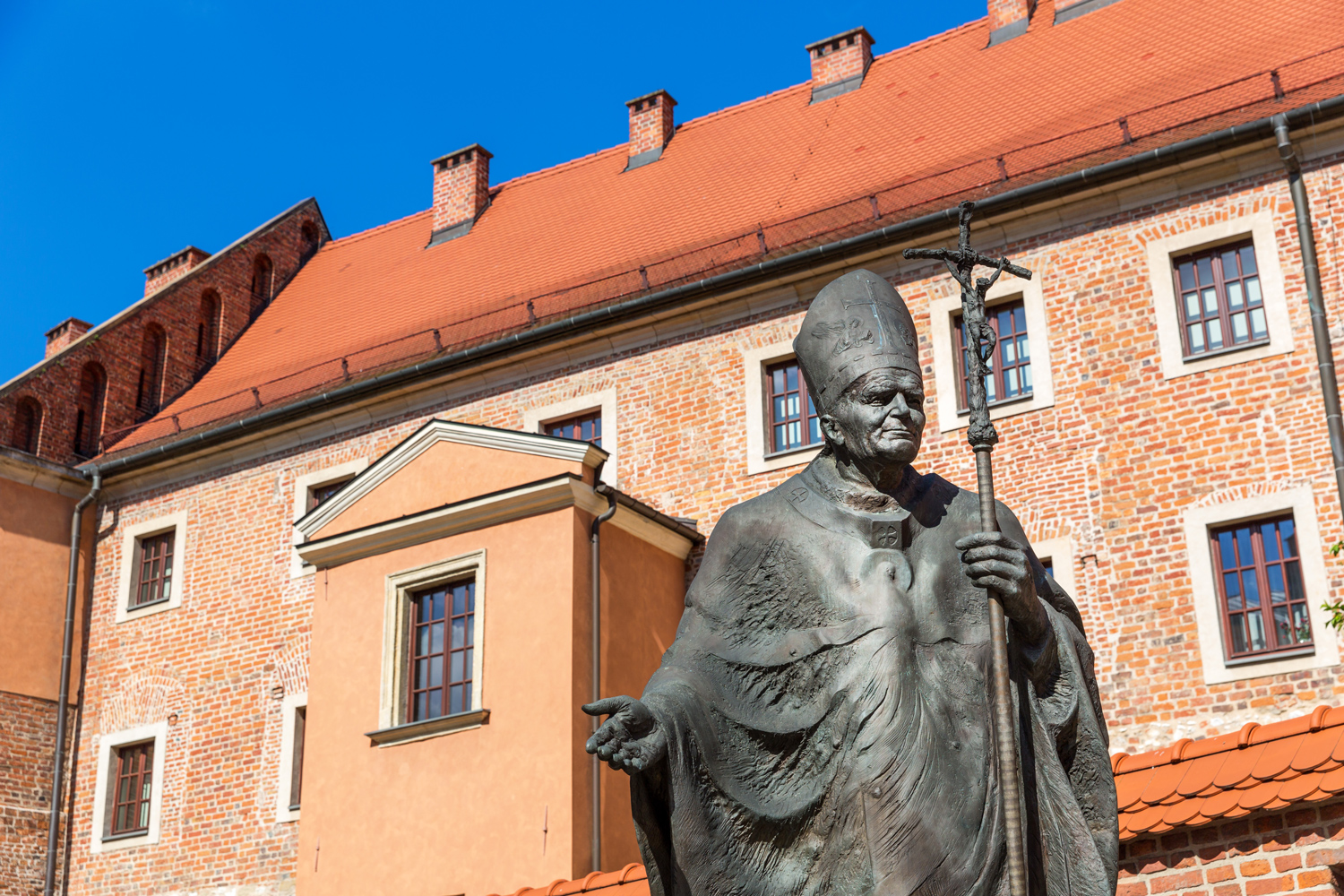
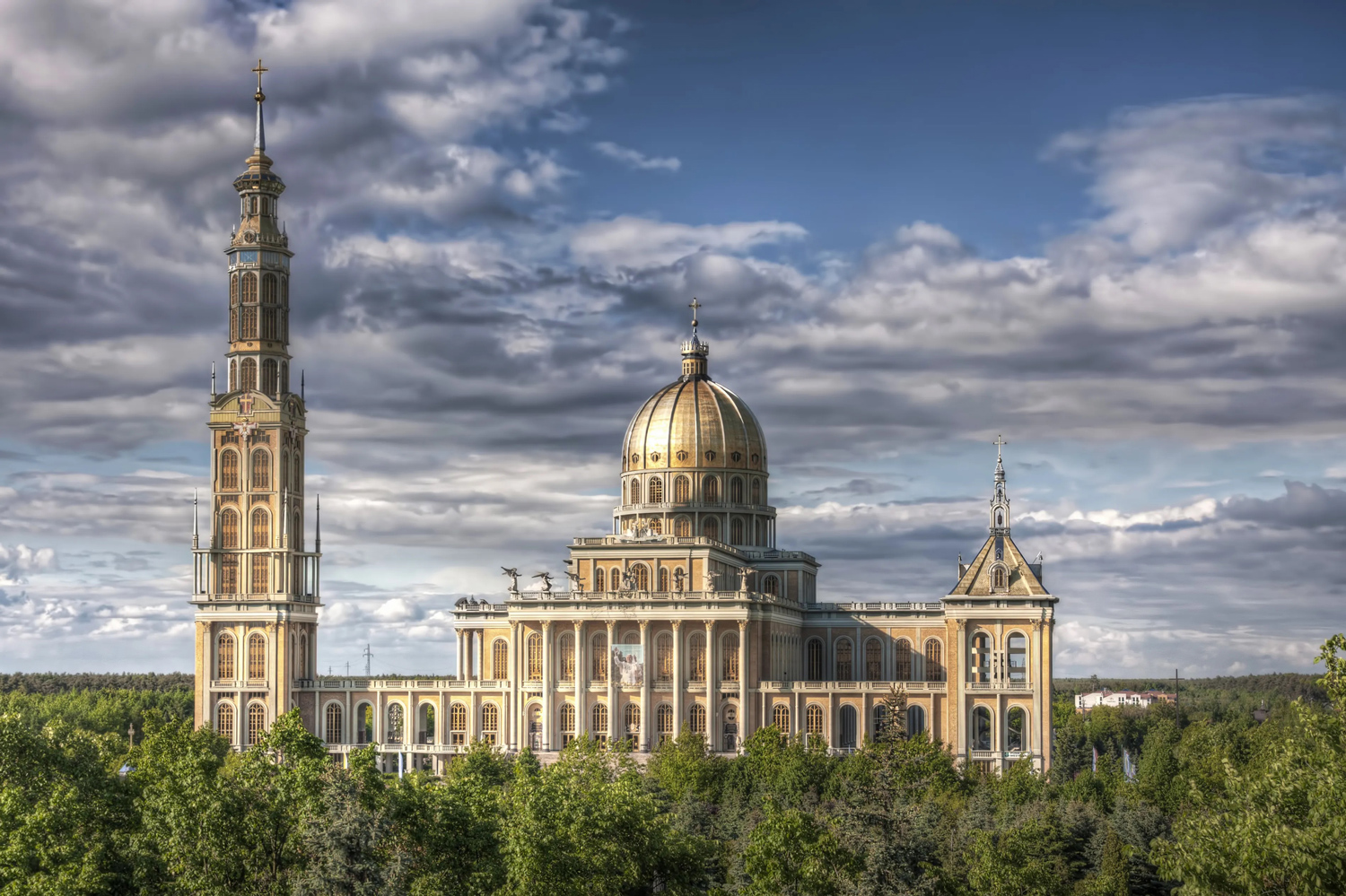
Itinerary
Arrival to Warsaw; Transfer to the hotel. Overnight in Warsaw.
DAY 2 – WARSAW
Warsaw bus sightseeing through the Royal Route, the Tomb of Unknown Soldier, and the Pilsudski Square, where during his first trip to Poland in 1979 John Paul II appealed to the crowd with his famous phrase: “Thy your Spirit come and change the outlook of land, This land”. Those days under communist rules no one believed it could ever be true, but 10 years later this wish fulfilled. Pilsudski Square was also a place of the funeral ceremony after his death; we continue the bus sightseeing passing Warsaw City with skyscrapers, Umschlagplatz and the Monument of Heroes of Ghetto – places commemorating the Warsaw Jewish in which our Pope prayed, then the Town Hall and a glimpse at the monumental architecture from communism time; walk around the Lazienki Royal Park with the Palace on the Water and the Island Theatre, open air Chopin’s concert (only summer); visit to the Royal Castle, walk around the Old Town (UNESCO Heritage) and the New Town: the Krasinski Palace, the Palace of Justice and the Monument of Warsaw Uprising; Overnight in Warsaw
DAY 3 – WARSAW – CZESTOCHOWA – KRAKOW
Transfer to the south of Poland to Czestochowa – pilgrimage’s place of John Paul II and the most important Saint Mary Sanctuary in Poland with the inscription over a gate devoted to the Pope, visit to the church with Black Madonna and the Pope’s Parents Monument; ride through the white rocky complex of Jura Krakowsko-Czestochowska adorned with castles situated on the top of those rocks dominating over valleys; transfer to Krakow; overnight in Krakow.
DAY 4 – KRAKOW – WIELICZKA – KRAKOW
Krakow sightseeing, the most famous place linked with a history and life of the Pope John Paul II: former student of Polish Philology and Theology, actor, young priest, university lecturer, bishop and finally Pope!!!; walk through the “Path of John Paul II”; visit to the Wawel Royal Castle with the Cathedral and Krakow Old Town (UNESCO Heritage): the Sukiennice cloth hall, St Mary church, defensive walls, and Barbican; free time. Overnight in Krakow.
Optional: In the afternoon leave for Wieliczka, a home to a unique, over 300m deep UNESCO Heritage listed Salt Mine, to explore its magnificent underground chapels, lakes and chambers carved from salt. Wieliczka is the oldest salt mine in the world still in operation. Return to Krakow.
DAY 5 – KRAKOW – AUSCHWITZ-BIRKENAU – WADOWICE – KALWARIA ZEBRZYDOWSKA – KRAKOW
Transfer to Auschwitz-Birkenau, visit the concentration and extermination camp museum (UNESCO Heritage); transfer to Wadowice – the Pope John Paul II birthplace; visit to the basilica and Pope’s museum; transfer to Kalwaria Zebrzydowska (UNESCO Heritage) – place where the special worshiper Karol Wojtyla from his childhood days started pilgrimages with his father, visit to the monastery with dozens of chapels spread around in a beautiful countryside scenery; transfer to Krakow; overnight in Krakow.
DAY 6 – KRAKOW
Krakow – transfer to the Convent of Mercy of God in Krakow – Lagiewniki consecrated by John Paul II and dedicated to Mercy of God; time for holly mass; time to discover the charm of the city by night. Overnight in Krakow.
DAY 7 – KRAKOW
Transfer to the airport.
END OF OUR SERVICES
- Transfer to/from the airport
- Transportation during the trip
- 6 nights in hotels in double rooms (2 in Warsaw, 4 in Krakow)
- Breakfast
- English speaking guide
- All fees and entrances
Contact our experts now about this plan
Marian Shrines of Europe – Poland, Czech Republic, Austria, Hungary, Bosna & Herzegovina, Croatia
Marian Shrines of Europe – Poland, Czech Republic, Austria, Hungary, Bosna & Herzegovina, Croatia
(21 days)
• Warsaw • Niepokalanow • Lichen • Czestochowa • Krakow • Kalwaria • Zebrzydowska • Wadowice • Wroclaw • Swidnica • Czermna • Prague • Svata • Hora • Cesky • Krumlov • Mariazell • Vienna • Esztergom • Budapest • Zagreb • Plitvice • Lakes • Split • Medjugorje
Visit the most important Marian shrines of Central Europe together with other top attractions of this part of old continent. See one of the world’s oldest Marian shrines of Jasna Gora in Czestochowa, or one of the world’s biggest one in Lichen. Climb the Czech Holy Mountain (Svata Hora) or its Austrian equivalent in Mariazell. Pass Esztergom, called “Hungarian Vatican” to reach famous Medjugorje in Bosnia and Herzegovina, well known pilgrimage place related to apparitions of Virgen Mary. One a way discovers 5 capitals, many charming towns, and beautiful landscapes as well as many valuable monuments of culture and nature listed the UNESCO Heritage sites.

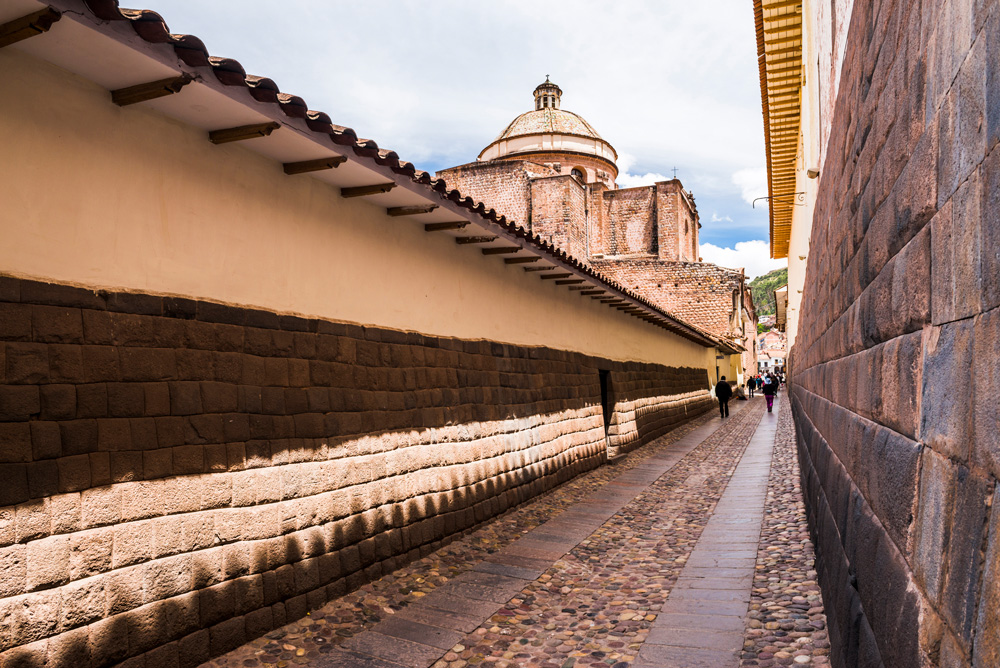
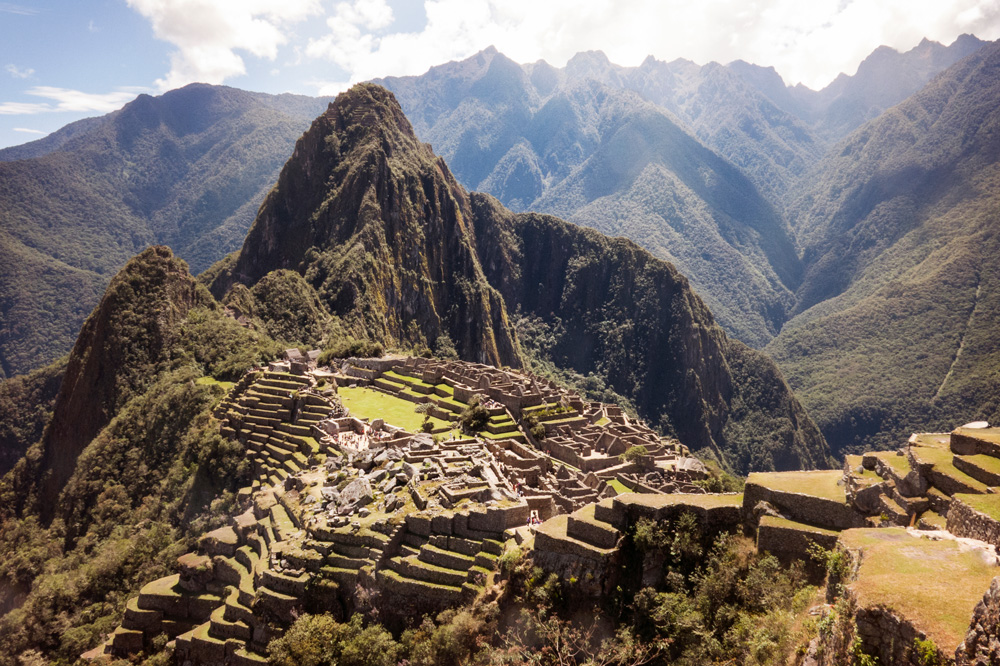
Itinerary
Arrival to Warsaw; welcome dinner. Transfer to the hotel and overnight in Warsaw.
DAY 2 – WARSAW
Explore Warsaw, the Polish capital, and its main sights. Stroll through the manicured greens of Lazienki Royal Park with its monument of the famous composer Frédéric Chopin, Island Amphitheatre, and the neoclassical Palace on the Water. Transfer to the old Jewish quarter and see the remnants of the former Jewish Ghetto and Holocaust memorials like Umschlagplatz and the Monument to the Ghetto Heroes. In the Old Town, a UNESCO Heritage Site, walk along the cobbled streets from the Royal Castle past St John’s Cathedral through the Market
Square and Barbican to the New Town, soaking up the medieval atmosphere. Continue onto the Saxon Gardens and Pilsudski Square, the site of John Paul’s II celebrated mass during his first pilgrimage to Poland, when he spoke the famous words: “May the Holy Spirit descend and renew the face of the Earth, this Earth..” – a message which became true after the fall of communism in Poland. Overnight in Warsaw.
DAY 3 – WARSAW – NIEPOKALANOW – LICHEN
Transfer from Warsaw to Niepokalanow, a Franciscan catholic community founded by Friar Maximilian Kolbe in 1927. Visit the Shrine of St Maximilian Kolbe – a great promotor of consecration and entrustment to Mary, who was later canonized as a martyr-saint for sacrificing his life in a Nazi death camp in Auschwitz for a fellow prisoner. Continue the journey towards Lichen Stary. Visit the shrine to the Virgin of Lichen with its famous Way of the Cross (Golgotha), the monument to Pope John Paul II and the shrine blessed by the Pope – the biggest one
in Europe, the seventh biggest in Europe and the eleventh biggest in the world. Enjoy a stroll with your local guide around the sanctuary. Overnight in Lichen.
DAY 4 – LICHEN – CZESTOCHOWA – KRAKOW
In the morning transfer to Czestochowa, home to the most important Polish shrine of Virgin Mary which attracts millions of pilgrims each year and was also visited by Pope John Paul II. Visit the monastery of Jasna Gora with the famous altar of the Black Madonna, the monument to the parents of the Pope and the inscription on the door in his honor. We continue our journey towards Krakow. Overnight in Krakow.
DAY 5 – KRAKOW – LAGIEWNIKI
Krakow, the former royal capital, fully deserves its position on the first ever published UNESCO World Heritage List. The city has many links to John Paul II who lived here in his youth and later was appointed the bishop and
Metropolitan of Krakow. Visit the Wawel Hill with the XIV century cathedral and the Wawel Royal Castle with an arcaded courtyard – the former seat of Polish kings. Our tour continues through the Market Square in the Old Town with its iconic landmarks such as Sukiennice Cloth Hall, St Mary’s Church, and Town Hall Tower. Continue onto the medieval fortifications of Barbican with Florian’s Gate. In the afternoon visit the Shrine of Divine Mercy in Krakow-Lagiewniki blessed by John Paul II. Although it is the newest sanctuary in Krakow it attracts thousands of pilgrims due to the relics of St Faustina buried here. Visit the monastery where St Faustina Kowalska lived and the basilica with the famous image of Merciful Jesus. Free time to attend a mass at the shrine. Overnight in Krakow.
DAY 6 – KRAKOW – KALWARIA ZEBRZYDOWSKA – WADOWICE – WROCLAW
Transfer to Kalwaria Zebrzydowska (UNESCO), a unique sanctuary of 42 picturesque chapels scattered around the surrounding hills of Beskidy Mountains, resembling the landscape of the Holy Land. Kalwaria’s chapels symbolize the perfect union of the worldly with the spiritual and religious values. Transfer to Wadowice, the birthplace of Pope John Paul II. Visit Karol Wojtyla’s childhood home and the basilica where was baptized. Continue the journey towards Wroclaw. Overnight in Wroclaw.
DAY 7 – WROCLAW – SWIDNICA – WROCLAW
Explore Wroclaw – a City of a Hundred Bridges. Its rich history and medieval atmosphere attract millions of tourists every year. Start at the main entrance of the XIII century Cathedral of St John the Baptist located on the Ostrow Tumski
island – the oldest part of Wroclaw. Crossing the Tumski bridge we arrive in the Old Town with a cathedral and Wroclaw University, famous for its representative baroque lecture hall Aula Leopoldina. The next highlight on our route is the Centennial Hall (UNESCO). Transfer to Swidnica and visit the Evangelical Church of Peace (UNESCO) – built from wood, straw, clay, and sand in XVII century. Overnight in Wroclaw.
DAY 8 – WROCLAW – CZERMNA – PRAGUE
Transfer to Czermna where we will visit the Chapel of Skulls, one in its kind place in Poland and one of only three similar chapels in Europe. It’s a mass grave of the victims of the Thirty-Year War and the Silesian Wars as well as of famines and cholera epidemics. Every bone in the chapel is authentic and the skulls of those who created the chapel were placed in its the centre, on the altar. Transfer to Prague. Enjoy the afternoon at leisure. Overnight in Prague.
DAY 9 – PRAGUE
Explore Prague, described as “the golden city”. Transfer to the Prague Castle, the ancient seat of the kings, now housing the Presidential Palace and various museums. Visit the Royal Castle and St Vito’s Cathedral with the funeral chapel of St Wenceslas – the patron saint of Czech Republic. Stroll around Hradcany Hill and its remarkable baroque cloister of Loreto, the Archbishop’s Palace, and the Golden Street. Crossing Charles Bridge, we continue our walk along the Royal Route until the Old Town with the Market Square and the Town Hall Tower, to end on St Wenceslas Square. Overnight in Prague.
DAY 10 – PRAGUE – SVATA HORA – CESKY KRUMLOV
Transfer to Svata Hora – the oldest and most important pilgrimage site of Marian devotion in Czech Republic. Then transfer to Cesky Krumlov (UNESCO Heritage), and stroll through the medieval town located on the banks of Vltava
river. Overnight in Cesky Krumlov.
DAY 11 – CESKY KRUMLOV – MARIAZELL – VIENNA
Transfer to Mariazell, one of the most important pilgrimage sites of Marian devotion in Europe, famous for the ‘silent candles’ situated in the side chapel. Each one symbolizes a central-European country which was ruled by the Soviet
Union. The candles were lit for the first time in May 1990 when the last of the countries were liberated from the communist rule. Transfer to Vienna. Overnight in Vienna.
DAY 12 – VIENNA
In the morning visit the city of Vienna: stroll along Ring Strasse, Vienna’s main boulevard known for such magnificent buildings as the Museums of Fine Arts and Natural History, the State Opera House, the Parliament, the Burgtheatre, the Town Hall and the Votive Church. A short walk will take in the most beautiful parts of the city centre: museum district (Museums quartier), Hofburg – winter-residence of the Habsburgs, Kärtner Strasse (shopping street) and the Stephan’s Cathedral. Afternoon at leisure. Overnight in Vienna.
DAY 13 – VIENNA – ESZTERGOM – BUDAPEST
Transfer to Esztergom, called the “Hungarian Vatican”. Visit the biggest and the most important basilica in Hungary with the largest collection of church dowry in the country. In the afternoon transfer to Budapest. Overnight in Budapest.
DAY 14 – BUDAPEST
Visit the Hungarian capital – Budapest. Start in the district of Pest along the Andrassi Avenue to see the Opera House and the Heroes Square. Filled with statues of the most famous Hungarian kings and dukes, it commemorates a 1000-year anniversary of the city. Continue our walk through Deak Square, see St Stephen’s Basilica and the impressive neo-gothic House of Parliament. Visit Buda, the ancient capital of Hungary, to see the Fisherman’s Bastion from where you can enjoy the beautiful panorama. Stop at St Matthias Church. Overnight in Budapest.
DAY 15 – BUDAPEST – ZAGREB
Transfer to Zagreb – the capital of Croatia. Visit the Upper Town with its gothic cathedral, the beautiful and ornate St Catherine’s church and the impressive St Mark’s church with its famous color-tiled roof. Continue to the medieval Stone Gate and “Dolac” – an open-air market which is a must-see for all visitors. Take a scenic drive to the Lower Town with its colorful turn-of-the-century architecture. Its best example is the lovely building housing the Croatian National Theatre and Opera House. Overnight in Zagreb.
DAY 16 – ZAGREB – PLITVICE LAKES – SPLIT
Transfer to Plitvice, one of the most famous national parks of Croatia (UNESCO). A visit to the Plitvice Lake National Park (entrance included) allows us to admire a beautiful landscape of 16 lakes located on different levels and connected with 92 waterfalls and cascades. In the afternoon transfer to Split. Overnight in Split.
DAY 17 – SPLIT
Explore Split, a charming city on the Adriatic Coast. Its historical old town with the III century Diocletian´s Palace was declared a UNESCO World Heritage site. Explore one of the worlds´s most impressive Roman monuments within the
atmospheric old city walls and a maze of medieval stone streets filled with restaurants, cafes, and shops. Overnight in Split.
DAY 18 – SPLIT – MEDJUGORJE
Transfer to Medjugorje, a small town in Bosnia and Herzegovina. Visit one of the Christian worlds´s most famous monasteries with a local guide. Walk up to the Apparition Hill where Virgin Mary appeared to the village children. Overnight in Medjugorje.
DAY 19 – MEDJUGORJE
Free day to pray in Medjugorje. Overnight in Medjugorje.
DAY 20 – MEDJUGORJE – MOSTAR – DUBROVNIK
In the morning transfer to charming Mostar (UNESCO) to see its famous bridge “Stari Most” (“Old Bridge”). This iconic XVI century structure was destroyed during the Bosnian War and meticulously reconstructed, preserving its original beauty. In the afternoon return to Croatia for a panoramic walking tour of the ancient town of Dubrovnik, surrounded by the shimmering waters of the Adriatic. We will see the most important examples of Medieval Art: Onofrio’s Fountain – the first landmark you will see immediately after walking through the grand Pile Gate, Franciscan, and Dominican Monasteries, Sponza Palace and Rector’s Palace and the baroque cathedral of Dubrovnik. Overnight in Dubrovnik.
DAY 21 – DUBROVNIK
Transfer to the airport. Departure from Dubrovnik.
END OF OUR SERVICES
- Transfer to/from the airport
- Transportation during the trip
- 20 nights in double rooms: 20 nights in hotels (2 in Warsaw, 1 in Lichen, 2 in Krakow, 2 in Wroclaw, 2 in Prague, 1 in Cesky Krumlov, 2 in Vienna, 2 in Budapest, 1 in Zagreb, 2 in Split, 2 in Medjugorje, 1 in Dubrovnik)
- 20 x Half Board (breakfast and dinner): the first meal is a dinner on the day of arrival, the last meal is a breakfast on the day of departure
- English speaking guide
- All fees and entrances
Contact our experts now about this plan
Jewish Heritage Tour in Poland
Jewish Heritage Tour in Poland
9 days/8 nights
WARSAW – TREBLINKA – LODZ – LUBLIN – MAJDANEK – LEZAJSK – KRAKOW – AUSCHWITZ – WIELICZKA
Program Highlights:
- Visit places related to Jewish heritage in Poland in Warsaw, Lodz, Krakow, Lezajsk, Lublin.
- Find out more about Polish Jews that get popularity in the world like Arthur Rubinstein, Wladyslaw Szpilman (his story is the base of the Polanski’s movie “The Pianist”), Ludwik Zamenhof (creator of the international language Esperanto) or Helena Rubinstein (the creator of the cosmetics brand), Elimelech Weisblum of Lizhensk one of the great founding Rebbes of the Hasidic movement or famous architect Daniel Libeskind.
- Visit UNESCO Heritage Sites in Warsaw, Auschwitz-Birkenau, Krakow, Wieliczka.
- Pay tribute to the victims of WW2 in death camps in Treblinka, Auschwitz and Majdanek.
- Discover the Polish origin of “obwarzanek” (bagel) a typical Krakow pastry, that was brought by Jewish population to North America and right now is extremely popular mostly in New York and Montreal areas.
- Visit POLIN Museum of the History of Polish Jews considered to be one of the best museums in Europe, that was awarded European Museum of The Year 2016 winning against 49 candidates from 24 countries.
- Visit to the museum “Oscar Schindler’s Factory” in Krakow that present the life in Krakow before and during WW2.
Discover the Jewish Heritage in Poland. From the 11th century till the beginning of the World War II, Poland was known as the cultural and spiritual centre of European Jews. Many of the Polish Jews gained the fame all around the world. As examples we can mention: Elimelech Weisblum of Lizhensk one of the great founding Rebbes of the Hasidic movement, Arthur Rubinstein (pianist), Wladyslaw Szpilman (pianist, his story is the base of the Polanski’s movie “The Pianist”), Ludwik Zamenhof (creator of the international language Esperanto), Helena Rubinstein (the creator of the cosmetics brand) or founders of future Israel state that were born in territory of Poland like Ben Gurion, Menachem Begin, Jochanan Bader. Everyone knows MGM Studios, but not many knows that Samuel Goldwyn was born in Poland. Everyone knows Max Factor, but only few knows that Maksymilian Faktorowicz was born in Poland. Even nowadays some widely known personalities, may find they roots in Poland, for example a famous architect Daniel Libeskind, author of master plan of the reconstruction of the World Trade Center site in Lower Manhattan and designer of One World Trade Center (Freedom Tower). So, if you are interested in the legacy of Polish Jews this travel is just for you. Go for it!


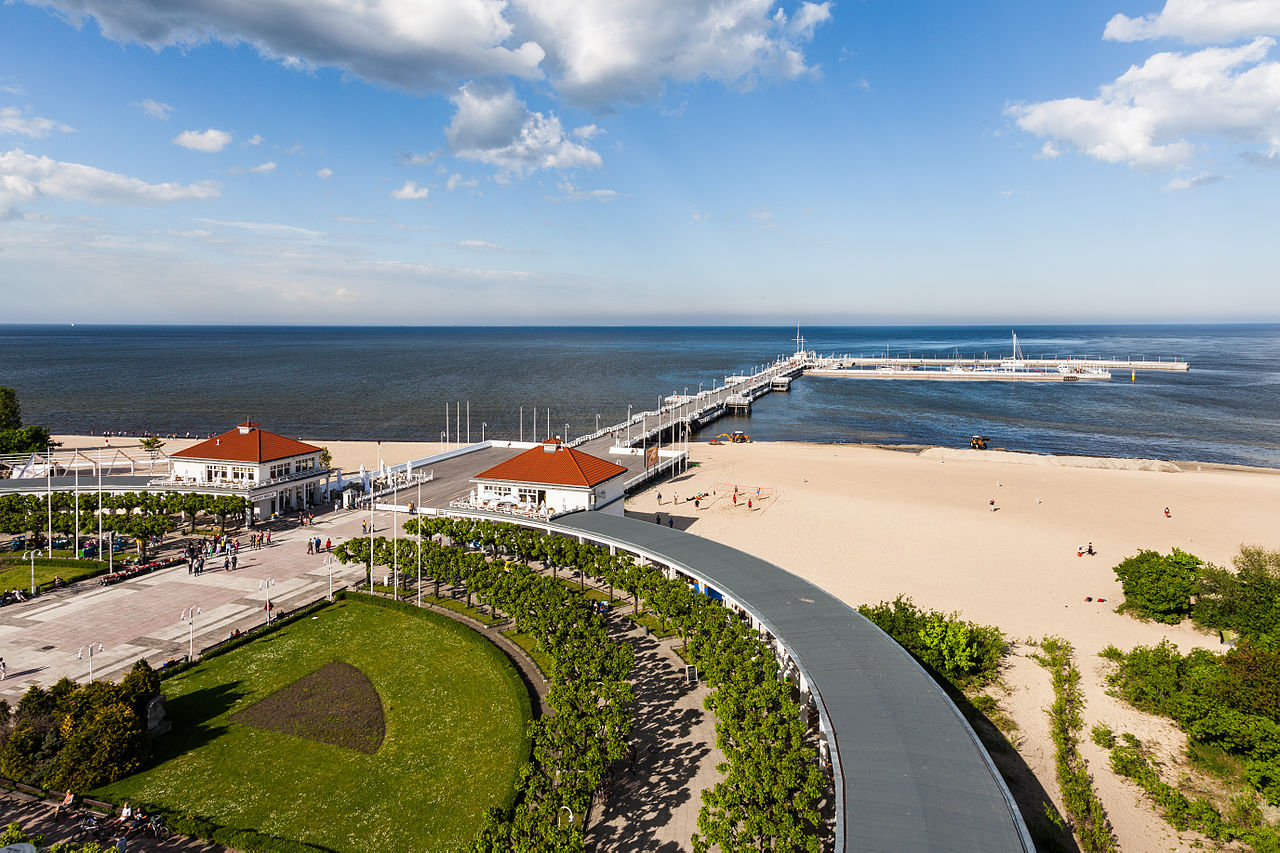
Itinerary
Arrival in Warsaw. Transfer to the hotel and overnight in Warsaw.
Day 2, Warsaw
Warsaw City Tour allows us to immerse ourselves in and observe the many contrasts of the Polish capital city. The tour starts with a walk around the Lazienki Royal Park. Here we will see the famous monument dedicated to Frederic Chopin, the Palace on the Water, and the Theater on the Island. We will continue with transfer to the Old Town (UNESCO) and a short walk around the Old Town: from the Royal Castle, passing next to the Saint John Cathedral, the Market Square and the barbacane to the New Town. We will continue to the Krasinski Palace, the Supreme Court building. Our itinerary will continue with the Grand Theatre and the National Opera, the Jablonowscy Palace, the Tomb of the Unknown Soldier and the Saxon Garden. Overnight in Warsaw.
Day 3, Warsaw – Treblinka – Warsaw
During the excursion we will see the old Jewish part of the city, we will visit the synagogue and the Kirkut Jewish cemetery. We will also see other places related to the history and tradition of Polish Jews, including the area of the former ghetto that was completely destroyed during the Second World War and the monuments that commemorate the martyrdom of the Jews in the times of the Holocaust. Visit POLIN Museum that present the history of Polish Jews through centuries, that is considered to be one of the best museums in Europe. In the afternoon: Excursion to Treblinka (4h) to see the museum in the former concentration and extermination camp built by the Germans in the Polish lands during the second world war. In just 16 months when the camp in Treblinka was in operation, it is estimated that almost 800,000 people were killed in its gas chambers, which makes it the second largest Nazi death camp apart from Auschwitz. Return to Warsaw. Overnight in Warsaw.
Day 4, Warsaw – Lodz – Warsaw
Morning train transfer to Lodz – one of the biggest Polish cities. During your visit you would find traces of the four cultures: Polish, Jewish, German and Russian that coexisted there and became one. Furthermore, you would admire modernist and industrial arquitecture. Thanks to its numerous factories, Lodz was also called the „Polish Manchester”. During the route you would see the Old Town and the industrial complex of Poznanski family, the famous Manufaktura. Visit to the museum of the Poznanski Factory, one of the richest Jews in the city of its time. In the end, you would discover Piotrkowska Street, the most popular walkway full of shops, pubs, restaurants, and sculptures that commemorate famous inhabitants of Lodz. Finally, we will visit the sites related to the Jewish heritage of Lodz, the cemetery, and the remains of the ghetto. Lodz is also a birthplace of famous pianist Arthur Rubinstein and the famous architect Daniel Libeskind, author of master plan of the reconstruction of the World Trade Center site in Lower Manhattan and designer of One World Trade Center (Freedom Tower). Return to Warsaw. Overnight in Warsaw.
Day 5, Warsaw – Lublin
Morning train transfer to Lublin, the largest city in southeastern Poland, with a long history and very interesting historical buildings. In was here where the Lublin Union was signed in 1569 – a pact that sealed the constitutional union of the Kingdom of Poland and the Grand Duchy of Lithuania creating a free republic associated with a single Parliament, an elected king, a currency, and ethnic and religious tolerance. The Lublin sites stand out as physical reminders of an important milestone in the development of the principles of European democracy, four centuries
before the EU was created. During the walk through the beautiful old town, we will discover many interesting monuments to finish next to the castle. Lublin is one of the Polish cities where the Hebrew culture could develop freely over the centuries, so first Jewish settlers came over already in XV century. Flourishing Hebrew sciences caused the city to be called the Jerusalem of the Polish Kingdom, and even the Jewish Oxford as it was here when in the 16th century, the first Hebrew books and prayer books were published. The Jewish legacy of Lublin could be seen in the castle and old town area as well as in the old University of Wise Men (Jesziwas Chachmej Lublin), in which the old assembly hall is preserved, that formerly operated as a synagogue. Overnight in Lublin.
Day 6, Lublin – Majdanek – Lezajsk – Krakow
In the morning visit to the museum in Majdanek, an extermination camp built by Nazi Germany, in German-occupied Poland 4 km from the city of Lublin, near the border with Ukraine. This proximity meant that the Germans did not have time to destroy the field in retreat, so it is preserved as it was at the time of World War II. Transfer from Lublin to Lezajsk where there is a tomb of Rabbi Elimelech Weissblum of Lezajsk (Lizhensk) a Polish rabbi and one of the great founding Rebbes of the Hasidic movement. Further transfer to Krakow. Overnight in Krakow.
Day 7, Krakow
Krakow is the cultural capital of Poland with Old Town listed as UNESCO Heritage. During the tour you will see Barbican and defensive walls with Florian’s Gate, the Main Market Square with Sukiennice Cloth Hall, St Mary’s Church, and Town Hall Tower. We would proceed to the Jagiellonian University, pass by Archbishop Palace (where John Paul II used to live) as well as St Andrew’s Church and St Peter and Paul’s Church to reach the Wawel Hill. During the walk we will taste “obwarzanek” (bagel) a typical Krakow pastry, that was brought by Jewish population to North America and right now is extremely popular mostly in New York and Montreal areas. In the afternoon we will explore Krakow Kazimierz (Jewish District) known from Schindler’s List. Kazimierz used to be a separate town close to medieval city of Krakow. It was mostly populated by Jewish community. Throughout years it became Krakow’s district, but the abundance of markets, synagogues and kirkuts (Jewish cemeteries) shaped character of this part of town. As Kazimierz depicts the history of Polish Jews, some shots of Steven Spielberg Schindler’s List were captured here. During this tour you would discover this charming part of Krakow with its monuments and complexed history. Visit to the museum “Oscar Schindler’s Factory” in Krakow included. During our trip, you will have the opportunity to learn about history, monuments, and impressive culture in a part of Krakow still little known to tourists. Overnight in Krakow.
Day 8, Krakow – Oswiecim (Auschwitz) – Wieliczka – Krakow
Transfer to Oswiecim. Visit the museum of Auschwitz – Birkenau (UNESCO), the famous concentration camp and extermination, a symbol of terror, genocide, and holocaust. It was established by the Nazis in 1940, in the suburbs of the city of Oswiecim (Auschwitz in German) which, like other parts of Poland, was occupied by the Germans during the World War II. A visit to concentration and extermination camp museum might help you to comprehend what incomprehensible.
Transfer to Wieliczka the most beautiful and the oldest operating salt mine in the world (UNESCO Heritage). From over 700 years it was a source of Polish fortune and a physical fundament of culture. Today Wieliczka is the most willingly visited Polish tourist object with magnificent chapels, charming underground lakes and original tools and equipment. During this tour you could see a number of excavated chambers on 3 levels adorned with beautiful sculptures made of salt as well as a salt museum. Transfer to Krakow. Overnight in Krakow
Day 9, Krakow
Transfer to the airport in Krakow
- 8 nights in DBL/TWIN rooms in centrally located hotels:
- 4 nights in Warsaw
- 1 night in Lublin
- 3 nights in Krakow
- 8 x buffet breakfast in all hotels
- Degustation of “obwarzanek” (bagel) a typical Krakow pastry
- Transfer from / to airport
- Transportation during a tour by train and private car / minivan
- All excursions as per the itinerary
- Local English-speaking guides
- Warsaw
- Lublin
- Krakow
- Auschwitz-Birkenau
- Wieliczka
- Entrances to:
- POLIN Museum of the History of Polish Jews
- Treblinka concentration & extermination camp museum
- Factory Museum in Lodz
- Majdanek concentration & extermination camp museum
- Museum “Oscar Schindler’s Factory”
- Auschwitz-Birkenau concentration & extermination camp museum
- Wieliczka Salt Mine
Price excludes:
- Meals (except breakfast)
Contact our experts now about this plan
Along the Baltic Coast: Poland, Lithuania, Latvia, Estonia, Finland
Along the Baltic Coast: Poland, Lithuania, Latvia, Estonia, Finland
(12 days)
• Warsaw • Torun Malbork • Gdansk Sopot • Gdynia • Gierloz • Suwalki • Kaunas • Trakai • Vilnius • Siauliali • Rundale • Riga • Sigulda • Tartu • Tallinn • Helsinki
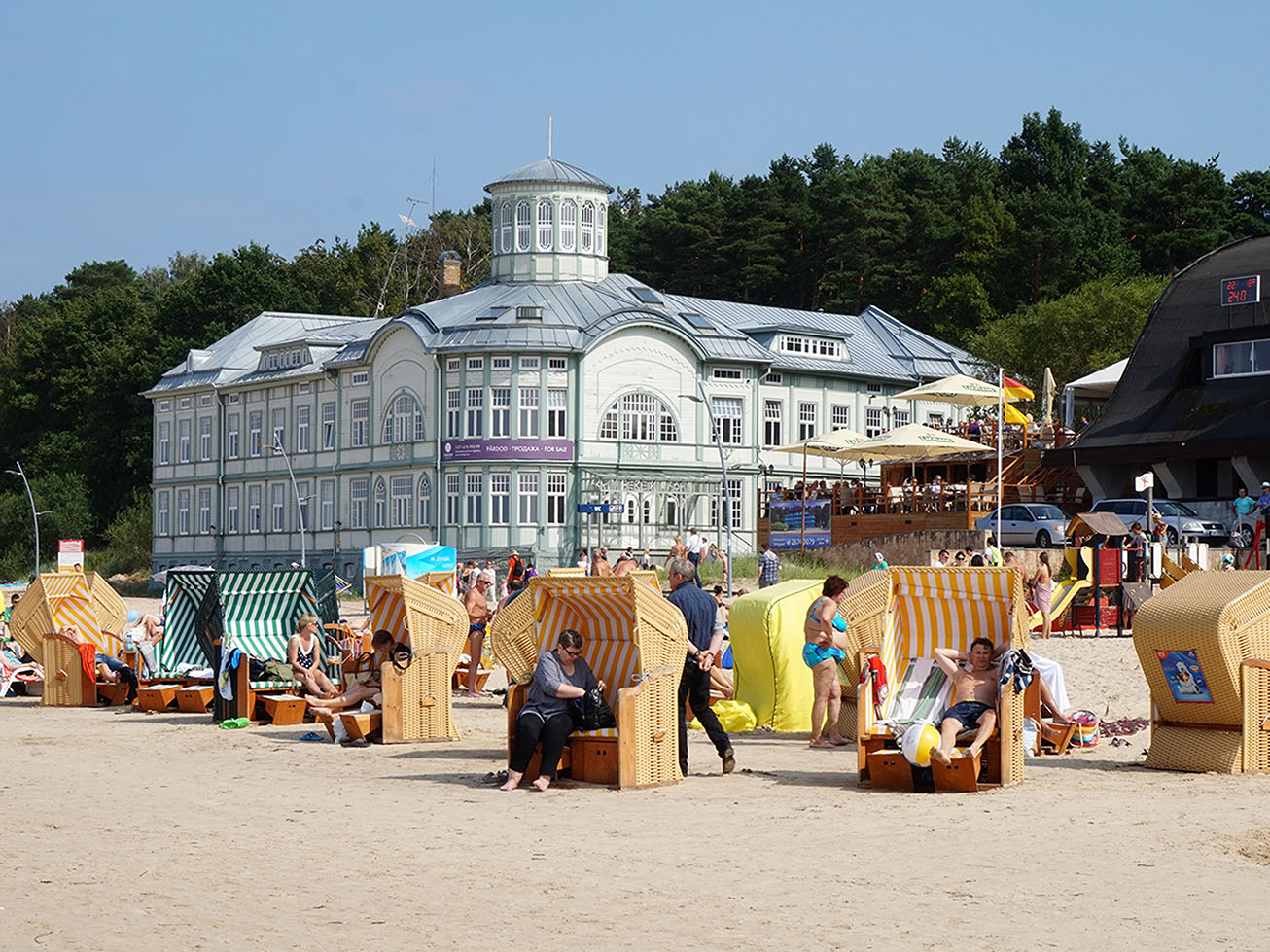
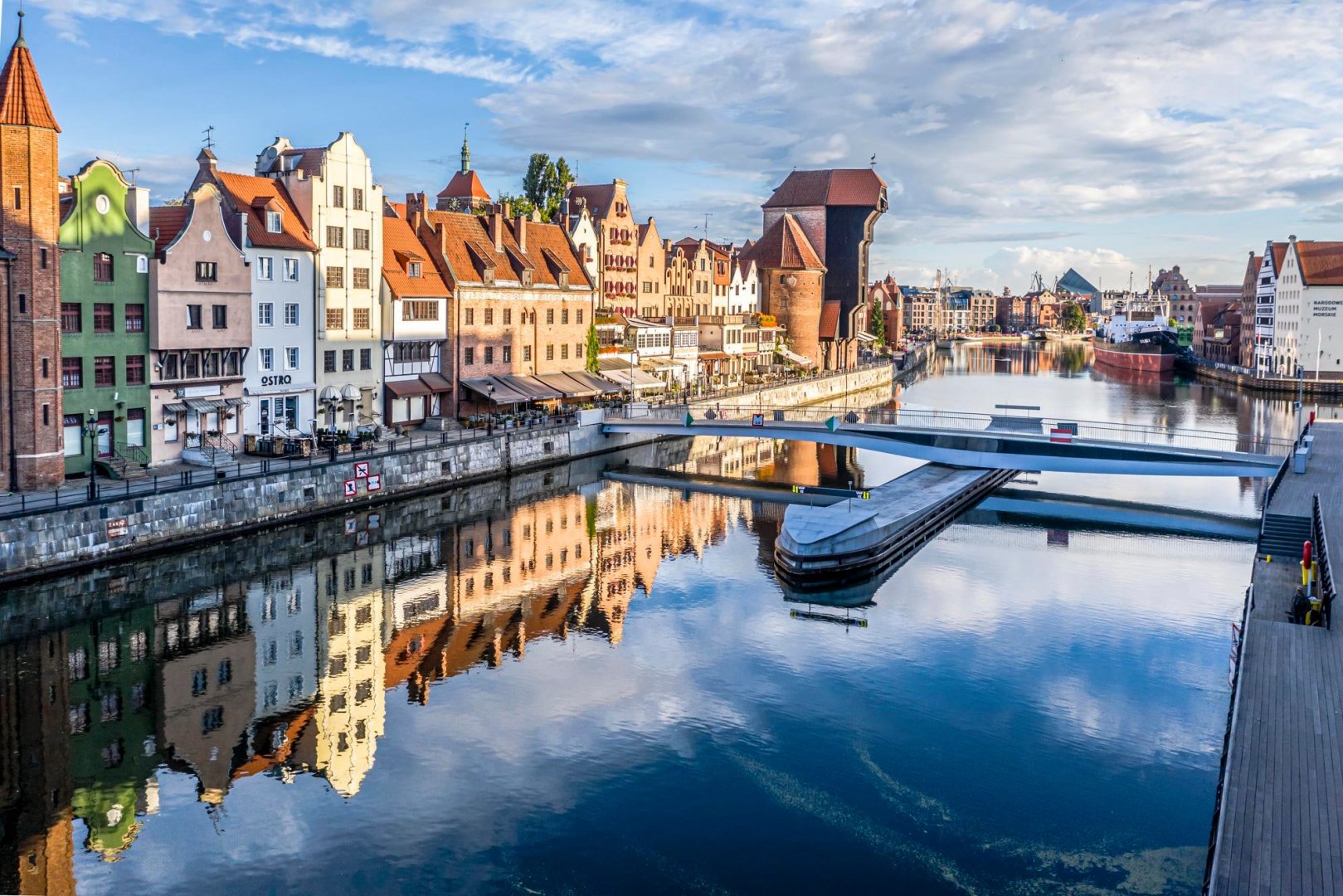

Itinerary
Arrival to Warsaw, the capital of Poland; meeting with the guide at the Frederic Chopin airport; transfer to the hotel; time to refresh; welcome dinner.
DAY 2 – WARSAW
Warsaw city sightseeing: transfer to the Lazienki Royal Park with the Palace on the Water and the Island Theatre; from there route leads through Warsaw City with skyscrapers and monumental architecture from communism time,
then the Grand Theatre and Opera House, Jablonowski Palace, Tomb of Unknown Soldier and Saski Park, Town Hall, Umschlagplatz and the Monument of Heroes of Ghetto; transfer to the Old Town (UNESCO Heritage); visit to the Royal Castle and the cathedral, Market Square, and defensive walls with barbican; further walk to the New Town: The Krasinski Palace, Palace of Justice and Monument of Warsaw Uprising; dinner.
DAY 3 – WARSAW – TORUN – MALBORK
Transfer to Torun, the best example of medieval gothic town (UNESCO Heritage) and birthplace of great Polish astronomer Nicolaus Copernicus, who made a crucial discovery that the Earth is not the centre of universe; walk along the Old Town, visit to the Copernicus House and the Cathedral with a bell tower offering a splendid view over the city; optional visit to a gingerbread factory and time for a souvenir hunt; further transfer to Malbork; dinner.
DAY 4 – MALBORK – TRICITY (GDANSK – SOPOT – GDYNIA) – MALBORK
Morning departure for Gdansk; transfer to Westerplatte Peninsula guarding an entrance to the Gdansk harbour, a place where the WW II began, and the Polish Military Transit Depot was fighting against 13 times more
numerous German enemy; continue to the Gdansk Shipyard, the birthplace of Solidarity movement and stop by the Monument to Fallen Ship Workers (a homage to dockyard workers who died in December 1970) and a famous gate to the shipyard; Guided Gdansk Old Town Sightseeing – visit to the Europe’s biggest gothic brick church of St Mary, picturesque Dluga Street, Golden Gate, the Town Hall, Neptune fountain, the Arthur’s Court, the Green Gate overlooking Motlawa River, Old Crane; optional visit to the Arthur’s Court museum and the Amber Chamber for an amber polishing demonstration; free time for lunch and souvenir hunt; transfer to Oliwa Park with cathedral – the longest Cisterians church in the world, participation in unique organ concert; transfer to Gdynia harbor for a quick photo shot; transfer to Sopot, walk around the famous resort and along the longest wooden pier in Europe, elegant dinner in the fancy restaurant located at the end of the pier; evening transfer to Malbork.
DAY 5 – MALBORK – GIERLOZ – SUWALKI
Guided tour in Malbork Castle – the medieval capital of the Teutonic Order Knights in Eastern Europe and the biggest red brick gothic castle in the world (UNESCO Heritage); transfer to Gierloz; stop in Swieta Lipka in Jesuit monastery; drive to Gierloz; guided sightseeing of Wolfschanze – the Headquarter of Hitler on the Eastern front during the II WW; transfer through picturesque Masuria Region famous for its lakes and green forests to Suwalki; dinner.
DAY 6 – SUWALKI – KAUNAS (LITHUANIA) – TRAKAI – VILNIUS
Morning departure via Lithuanian border to Kaunas; short sightseeing of the city, visit to the Vytautas Church, dedicated to Virgin Mary, and walk along Freedom Avenue (Laisves Aleja), which is believed to be the longest pedestrian walkway in Europe; transfer to Trakai, the ancient capital of Lithuania and visit to the famous insular Trakai Castle – an excellent example of Gothic architecture; further drive to Vilnius; dinner
DAY 7 – VILNIUS
Vilnius City sightseeing, including Gates of Dawn, famous Gediminas castle, the Cathedral, charming St Anna Church, Vilnius University, and its inner yards – one of the oldest and most famous establishments of higher education in Eastern and Central Europe, which was founded in 1579 , the Hill of 3 crosses; afternoon to your leisure; dinner in a local restaurant.
DAY 8 – VILNIUS – SIAULALI – RUNDALE (LATVIA) – RIGA
Morning departure to Riga (Latvia); on the way visit to the most saint place in Lithuania – the Hill of Crosses, the national pilgrimage center with a huge number and variety of crosses brought by Christian pilgrims from all over the
world; entering the Latvia country; stop in Rundale Palace, one of the most outstanding monuments of Baroque and Rococo art in Latvia, built in XVIII century as a summer residence of Duke Ernst Johann of Courland, designed by the Italian architect B.F. Rastrelli, the main architect of Saint Petersburg these times; arrival to Riga; dinner.
DAY 9 – RIGA
Riga is famous for its architecture from 19th century and its Art Nouveau style (UNESCO). The city’s pearl of art is the Blackheads House, a striking gothic building with a Dutch renaissance façade. We would see also the Dome Cathedral (the largest place of worship in the Baltics), Freedom Monument and Powder Tower. Afternoon at your disposal or optional tour to the Latvian seaside resort – Jurmala, located 15 km from Riga: dinner.
DAY 10 – RIGA – SIGULDA – TARTU (ESTONIA) – TALLINN
Morning transfer to Sigulda to see the ruins of the castles of Sigulda, Cesis and Turaida, visit to Turaida’s museum – home of numerous statues and sculptures spread in a park. Transfer to Tartu, the oldest town in Estonia already
mentioned in XI century. Walk around the historic centre: university, town hall, ruins of the cathedral, bridges of Angel and Devil. Evening arrival to Tallinn. Dinner.
DAY 11 – TALLINN
Tallinn city sightseeing: Toompea Castle, city walls with Kiek in de Kok – 45m, six-storey cannon tower from 15th century, Dome Church, the oldest church in Estonia founded in 1219. In the Town Hall Square we would see town hall and a famous pharmacy (one of the oldest continuosly running pharmacies in Europe since 1422). Afternoon free to your leisure or an optional tour to baroque Kadriorg Palace. Farewell dinner.
DIA 12 – TALLINN– HELSINKI (FINLAND)
Morning ferry to Helsinki; Helsinki city sightseeing – the historical centre, the Presidential Palace, City Hall, the Parliament buildings, Finlandia Hall and the Opera House; stops in the park with the Sibelius Monument and, when
possible, at the Temppeliaukio Church (church in the rock). Transfer to the airport. Departure.
END OF OUR SERVICES
- Transfer to/from the airport
- Transportation during the trip
- 11 nights in double rooms: 11 nights in hotels (2 in Warsaw, 2 in Malbork, 1 in Suwalki, 2 in Vilnus, 2 in Riga, 2 in Tallin)
- 11 x Half Board (breakfast and dinner): the first meal is a dinner on the day of arrival, the last meal is a breakfast on the day of departure
- English speaking guide
- All fees and entrances
Contact our experts now about this plan
Greece
CONTINENTAL GREECE WITH MYKONOS AND SANTORINI
CONTINENTAL GREECE WITH MYKONOS AND SANTORINI
The perfect combination of the main continental attractions of Delphi and Meteora with the most famous Greek islands.
Duration: 12 days / 11 nights
Valid from: April to October
Program schedule: Monday, Tuesday, and Saturday
Places visited: Athens, Delphi, Kalambaka, Meteora, Mykonos and Santorini
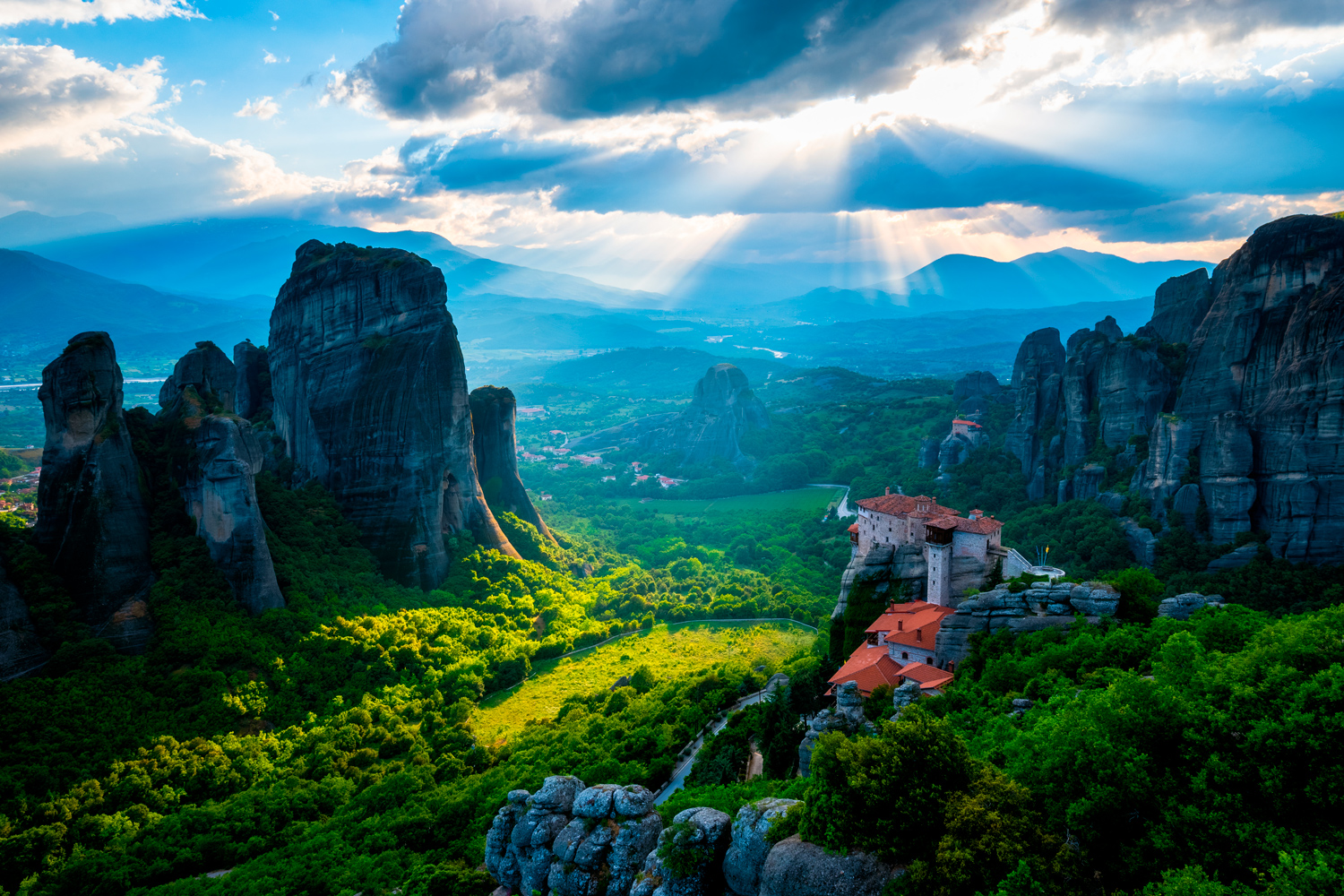
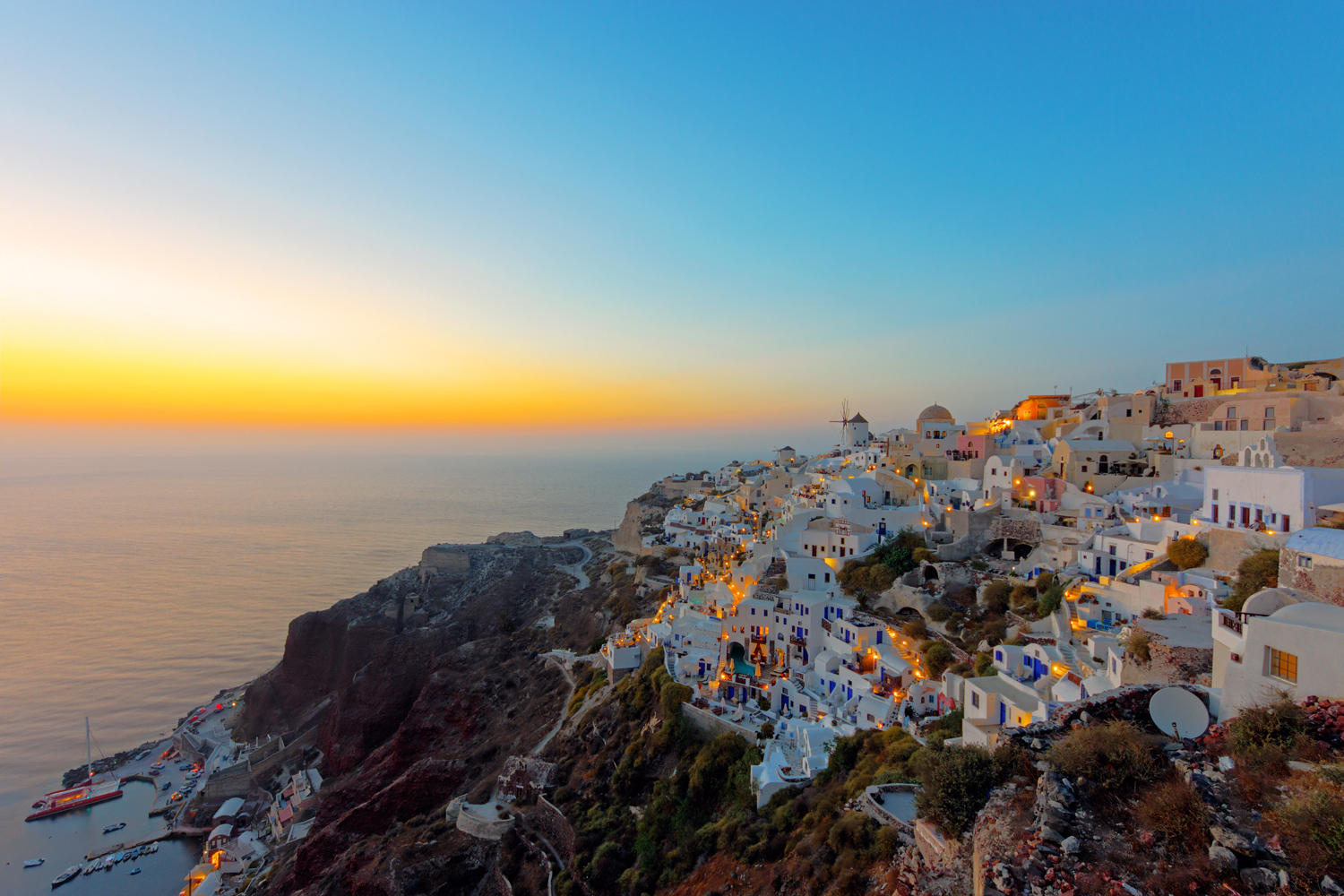
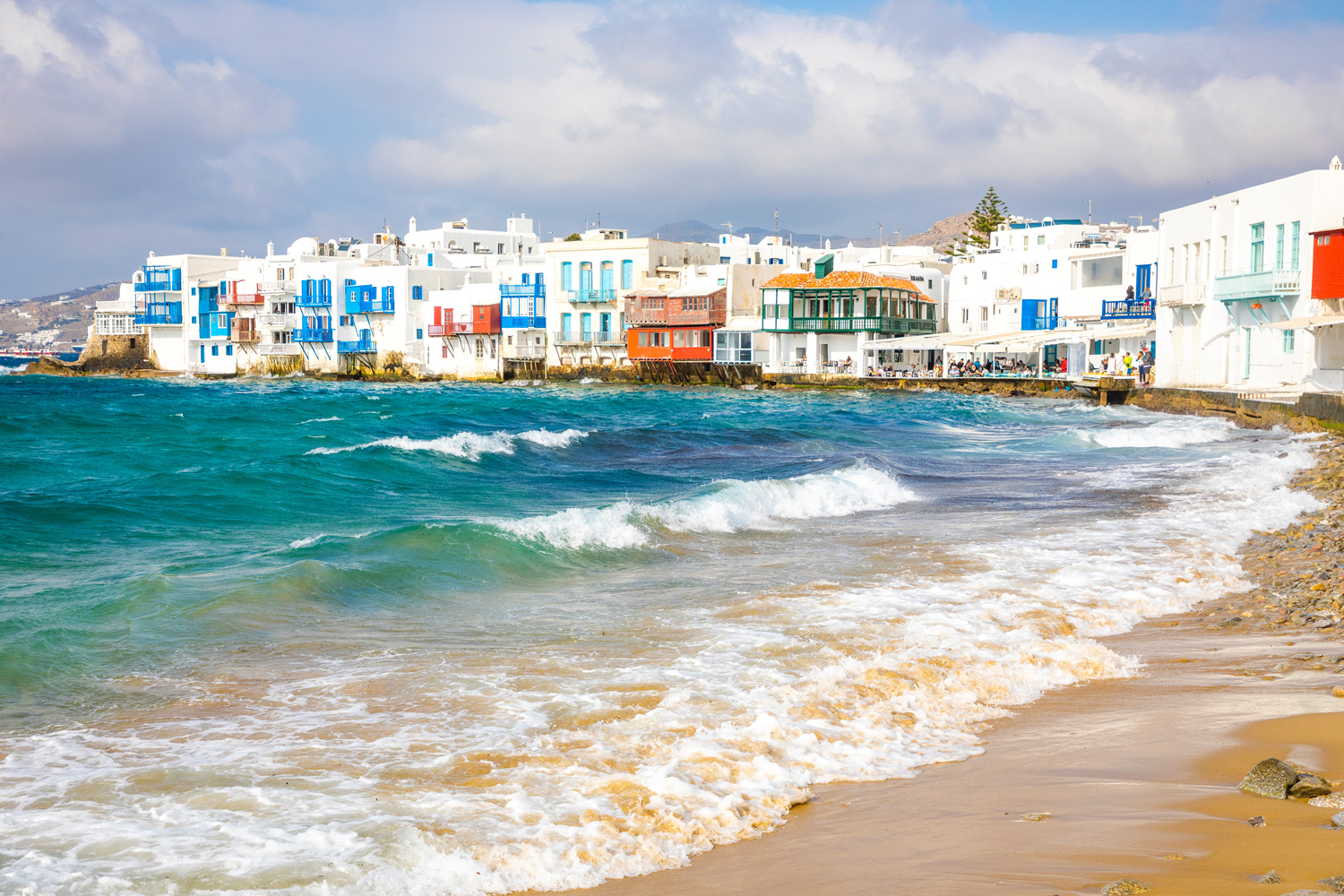
Itinerary
After your arrival in Athens our representative will meet you and assist with your transfer to your Hotel in Athens. Enjoy the rest of the day free to have a first impression of the city.
2nd day: Athens – Sightseeing
Athens Sightseeing – In the morning we begin our visit of Athens showing the highlights of the city with a panoramic tour in the center. We will see the Hadrian’s Arch and the Temple of Zeus and after to the Constitution square called “Syntagma” where the presidential guard, called “Evzonos”, is in front of the Greek parliament and the Tomb of the Unknown Soldier. Then we will go to the Panathinaikos stadium that was originally built in 329aC, where the first Olympics of the modern era in 1896 were held. After the drive through the center, we will visit the Acropolis and Parthenon, this magnificent monument built during the Golden age of Pericles at the time of 447BC dedicated to the Goddess Athena. Finally, we will visit the new Acropolis Museum, a building of a modern architecture, with the unique antiquities from the Acropolis.
After the tour, enjoy a free afternoon to explore the center of Athens which lies around Acropolis, passing through Plaka, Monastiraki and Thissio with a pleasant atmosphere of the ancient city.
3rd day: Delphi
In the morning we leave Athens and drive through the fertile plain of Beotia, crossing the towns of Thebes (infamous due to the tragedy of King Oedipus) Levadia and Arachova to arrive in Delphi. We will visit the archaeological site and museum of Delphi, where we see the Omphalos which the “navel / center of the universe” and whose fame was extended far beyond the borders of Greece, kept in the temple of the wrath Apollo. Inside the museum enjoy some masterpieces of ancient Greek sculpture as the famous athlete Aghias and the Brass Charioteer. The Oracle of Delphi acquired great influence in the world. The predictions of the priestess of Apollo called Pythia, influenced the decisions, and had a great impact on the history of the cities of ancient times. Walk the Via Sacra which arrives at the temple of Apollo. After visiting and getting to know this legendary location, we will continue our journey to the town of Kalambaka, an inspiring and impressive destination, to overnight at the hotel.
4th day: Meteora
Kalambaka is at the foot of this astonishing complex of Meteora, an impressive backdrop of gigantic rocks that appear to be suspended in the air, formed over 60 million years ago. On top of these rocks, the monks who settled after the 12th century, despite being almost inaccessible, built 24 monasteries in the hermit ideal time of the 15th century. Today six of these are kept which enjoy excellent specimens of Byzantine art. Meteora is a UNESCO World Heritage Site. Depart in the afternoon from Kalambaka passing through the plains of Thessaly, Lamia, and Thermopylae, where the monument of King Leonidas of Sparta is, and Thiva. Arrival at our final destination Athens late afternoon.
5th day: Athens
Free day in Athens. Start the morning experiencing a typical Greek coffee and explore the ancient and modern city. Walk the streets of the traditional neighborhoods of Plaka, Monastiraki and Thissio, where modern buildings blend with the old. Experience the spectacular Greek cuisine that is the basis of the Mediterranean diet and follow with a typical Greek drink “ouzo” or a good Greek wine and discover the real nightlife that Athens offers.
Enjoy the various optional tours that Athens.
6th day: Mykonos
Transfer from the Hotel to the port for your ferry to the island of Mykonos. Arrival in Mykonos and transfer you to your hotel. The rest of the day is free to discover the cosmopolitan town of Mykonos or explore some of the beaches. In the evening enjoy a cocktail at the “little Venice” with fantastic views of the sunset.
7th day: Mykonos
Free day in the island. Enjoy the relaxed atmosphere of this spectacular island, home of the “jet set”. Stroll through the cobblestoned paths of Hora in the day for shopping and at night for the world-famous nightlife, which usually ends at sunrise.
8th day: Mykonos
Free day in the island of Mykonos. Explore the island which has a variety of beaches and beach bars, each with different characteristics. In the afternoon, a walk through the narrow alleys of the center will unveil the charm and uniqueness of the island where you can see the famous windmills formerly used by the inhabitants, typical of the Cycladic architecture. In the evening enjoy a cocktail in one of the numerous bars scattered around the sidewalks of the center “hora” and enjoy the famous night out in the island.
Alternatively visit the island of Delos, one of the most important archaeological sites, that are part of history and Greek mythology. Delos was considered in Greek mythology as a holy sanctuary, which is the birthplace of the gods Apollo and Artemis.
9th day: Santorini
Transfer from the Hotel to the port for the ferry to island of Santorini. Arrival in Santorini and transfer to your hotel. Enjoy the rest of the day free for first impression of the island.
10th day: Santorini
Free day in the island of Santorini. The island of Santorini is famous for its spectacular views of the Caldera, the typical whitewashed houses with stunning views of the Aegean Sea. Around 1600 BC the island was the site of the Minoan eruption, which left a large crater named Caldera and was possibly the cause of the extinction of the Minoan civilization of Crete with a giant tsunami caused by the eruption. Another theory says that this was the origin of the legend of Atlantis.
11th day: Santorini
Free day in Santorini. Santorini has unique volcanic sand beaches with black or red colors depending on which beach you visit. In the afternoon don’t miss the famous sunset seen in the typical village of Oia (pronounced Ia), where the sun seems to sink into the Aegean blue sea.
12th day: Return
Transfer from Hotel to Santorini airport and have your flight to Athens and then connect to your onward flight.
- 4 nights in Athens at your chosen Hotel category
- 1 night in Kalambaka at your chosen Hotel category
- 3 nights in Mykonos at your chosen Hotel category
- 3 nights in Santorini at your chosen Hotel category
- Daily breakfast
- 1 dinner in Kalambaka
- Arrival and departure transfers, private in Athens and shared in Mykonos and Santorini
- Orientation meeting with representative on arrival in Athens for a local guidance and assistance in the transfer.
- City tour in Athens, Acropolis, and the museum with official English-speaking guide, including entrances.
- Tour of 2 Days in Delphi and Meteora with services of professional English-speaking guide and modern air-conditioned motor coach (Days 3-4)
- Entrances as per itinerary
- Hotel taxes
- Orientation meeting with representative on arrival in Athens for a local guidance and assistance in the transfer.
- City tour in Athens, Acropolis, and the museum with official English-speaking guide, including entrances.
- Ferry tickets between Athens – Mykonos
- Hydrofoil tickets between Mykonos – Santorini
- Flight from Santorini – Athens
- Flight taxes
Excluded:
- Hotel taxes from € 0,5 up to € 4,0 per room per night, payable directly at the Hotel.
- Porter fees
- Tips
- Optional tours
- Everything that is not specifically stated on the itinerary and inclusions

